Shop Our Latest Promotions Here!

Acerola Cherry
Read More +
Acerola Cherry (Malpighia glabra) also called the West Indies cherry or Barbados cherry is native to the tropical regions of the Americas. Acerola cherries are bright red in color, grow on small shrubs and are known to contain naturally occurring Vitamin C. The fruit is pleasant tasting and is used in modern and folk remedies to support digestion, endurance, liver function and overall wellness. Just one hundred grams of fresh acerola cherries is known to contain a whopping 2,700% of the body’s daily Vitamin C requirement which helps to protect cells against oxidative damage. That’s more than 33 times the amount of Vitamin C in orange juice. In a 2018 article found in the US National Library of Medicine, Acerola was named an “untapped functional superfruit.”*

Agaricus Blazei Murrill Mushroom
Read More +
Agaricus blazei Murrill (ABM) mushroom was originally found in Piedade, a small town located in the highland areas of the Atlantic Forest in the municipality of São Paulo, Brazil. It is an important part of locals’ daily diets in Piedade, a small town in São Paulo, Brazil. Those who live in Piedade have uncommonly good health in comparison to the general population in the area. It is also known as himematsutake, Mushroom of God, and Mushroom of the Sun. The mushroom became well known in 1960 by a Japanese researcher and grower, Takatoshi Furumoto. ABM mushrooms are rich in polysaccharides. They continue to be used traditionally to support the immune system, combat stress and improve the quality of life for overall good health. *

Alfalfa
Read More +
Alfalfa is a perennial plant that has long been used as a Traditional Chinese herb because of its many health benefits which support overall wellness. G-ART® contains alfalfa to help support healthy joints and overall wellness.*

American Ginseng
Read More +
“American ginseng (Panax quinquefolius) root was once worth its weight in gold. Entrepreneurial Jesuit missionaries cultivated and exported the herb from North America to China in large amounts during the 18th century, selling it for an extraordinary profit. At that time, little was known about the herb except that Native Americans were using it to treat nausea and vomiting.”
“American ginseng may be what the body needs when it is under stress. It is well known as an adaptogen – an herb that helps the body adapt to stressful conditions, changing temperatures and fatigue. It can energize when the body experiences tiredness and tranquilize when the body is under stress. By regulating the body’s production of stress hormones and protecting the brain’s hippocampus from the effects of stress hormones, the substances in American ginseng greatly reduce stress reactions.” American ginseng is a revered herb known to promote energy as well as support the immune system.
“There is still a lot more research to do on American ginseng. This powerful plant food has long been overshadowed by Asian ginseng. However, with a perfect package [of phytochemicals] and polysaccharides, American ginseng is becoming more promising for achieving and maintaining good health-A Nutritional Immunologist’s dream” (Chen, Jau-Fei, PhD. Nutrition, Immunity, Longevity 2015)! *

Apple
Read More +
“The apple was considered by ancient Egyptians to be both food and medicine. You may have heard of the old adage, ‘An apple a day keeps the doctor away.’ This could be because the apple is very high in fiber. The pectin in an apple swells when it comes into contact with water, which is why you feel full when you drink water after eating an apple. As it is highly nutritious, the apple is seen as an ideal food for weight control” (Chen, Jau-Fei, PhD. (2004) Enjoying Health and Longevity with Nutritional Immunology). *

Ashitaba
Read More +
Ashitaba is an amazing plant with a strong rejuvenating life force. If you pluck a leaf today, a new one will sprout tomorrow. Ashita means tomorrow and ba means leaf in Japanese. Native to Japan’s Hachijo Island, ashitaba has long been used by the island’s inhabitants as both food and as an herbal remedy. Because of its strong life force, ashitaba is well known as a longevity herb. Ashitaba’s scientific name is Angelica keiskei. Angelica is Latin for angel, a nod to its “heavenly” health benefits. Ashitaba is renowned for its wellness properties, and the Japanese use it to support overall health.*
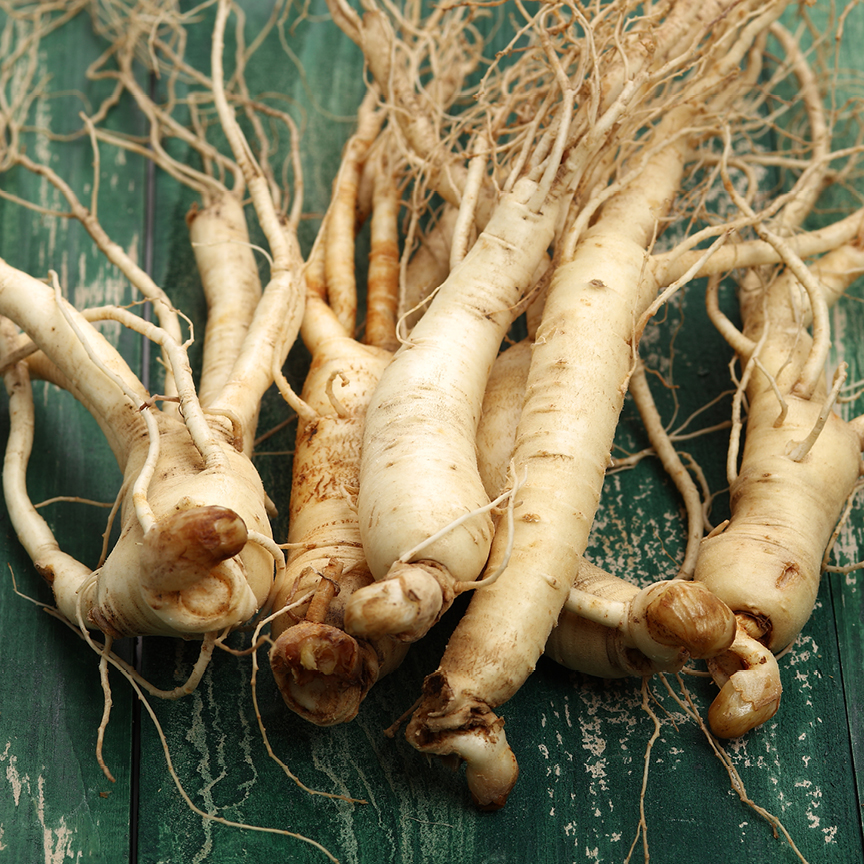
Asian Ginseng
Products +
Triflora Jasmine Tea, ART, Daily Nutrition Capsules Morning & Evening, E-Memories, Ji-Lin Ginseng, NOCO, Oxyginberry Capsules, Sure-D, W•L, S•T, Concenergy, Elemente Skin Care, Elemente Hair Care, Body Care, Oral Care, (Excluding Intensive Moisturizing Oil)
Read More +
Asian ginseng has long been considered the “king of herbs” throughout the world. Its prominence is evident in early Chinese history. It is a rare plant that is only harvested after a long growing time.
Its root needs at least 6-8 years before harvesting. In ancient times, people believed ginseng root to be the crystallized essence of earth formed in the shape of a man. Thus, they thought it had supernatural powers. Ginseng grows all over the world, but only a few areas can produce high-quality ginseng. The ginseng root used in our Ji-Lin Ginseng is harvested from the northern providence of China.
It is a high-quality premiere grade product which is carefully reviewed and tested to ensure it meets our high-quality standards. Ginseng was included in the first great Chinese herbal work, Shen Nong Ben Cao Jing (The Divine Farmer’s Materia Medica), as an herb used for “enlightening the mind and increasing the wisdom.” Ginseng, a popular herb which has been widely used in the Orient for over 5,000 years, was the subject of a research review conducted by Japanese pharmacologists in 1985 which confirmed homeostasis (balance) promoting properties. Ginseng has been used to support circulation and energy levels.
Soviet ginseng researcher Dr. Brekhman of the Soviet Academy of Sciences calls ginseng an “adaptogen.” He uses this term for herbs which not only help to maintain balance in the body, but which also help the body cope with stress and enhance its natural endurance. *

Asparagus
Read More +
Asparagus is a herbaceous, perennial plant native to the western coasts of Europe. Asparagus is 93% water and is very low in sodium. It is a good source of vitamin B6, calcium, magnesium, and zinc, and a very good source of dietary fiber, protein, and vitamin C. Only young asparagus shoots are commonly eaten. *

Banana
Read More +
The banana originated long ago in Asia and is now found growing wild throughout the world. Banana is botanically considered a berry. Bananas are healthy, delicious and usually considered easy to digest. Bananas are a natural source of potassium and fiber.*
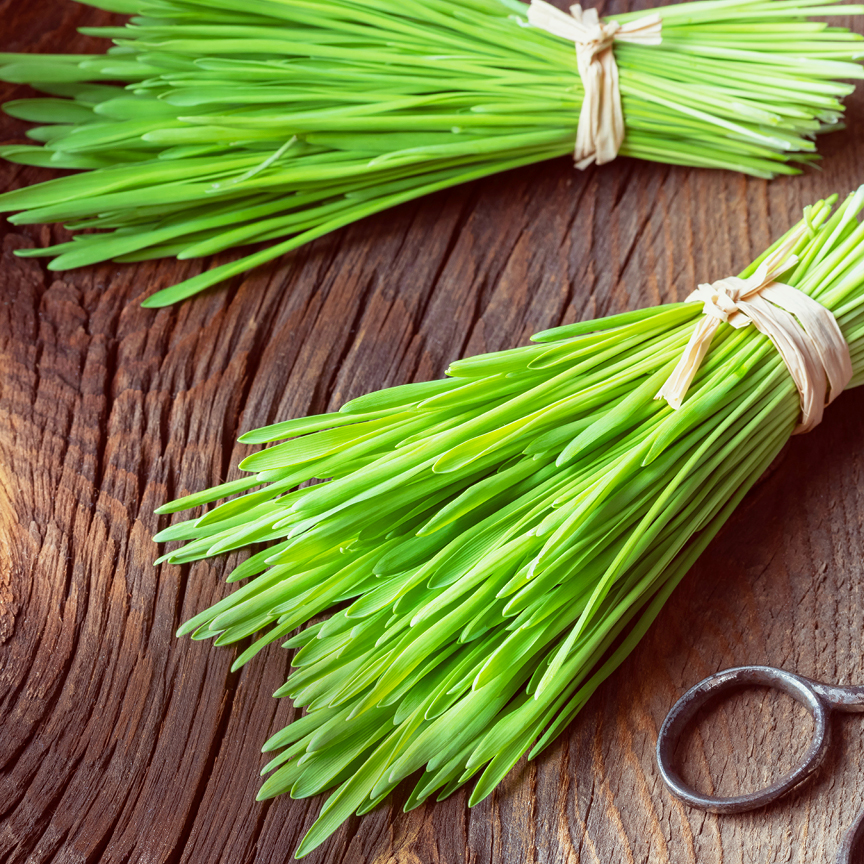
Barley Grass
Read More +
Barley grass, sometimes called barley greens, comes from young barley plants that haven’t started making seeds. During this stage of the plant’s life, it’s full of nutrients that help it grow larger leaves and seeds. You can take advantage of those barley grass benefits by eating the grass while it’s young. Barley grass offers a variety of health benefits because of the minerals, vitamins, and antioxidants it contains. Barley grass is rich in vitamins A and C, which act as antioxidants.*

Barley Seed
Read More +
Barley seeds were among the first cultivated grains in Eurasia as early as 10,000 years ago. They are a member of the grass family and are often used in soups or stews. Barley seeds are a highly resilient crop and are made of 69% water, 28% carbohydrates, 2% protein, and 0.4% fat. According to Health Canada and the US Food and Drug Administration, consuming at least 3 grams per day of barley or 0.75 grams per serving of soluble fiber can lower levels of blood cholesterol.*
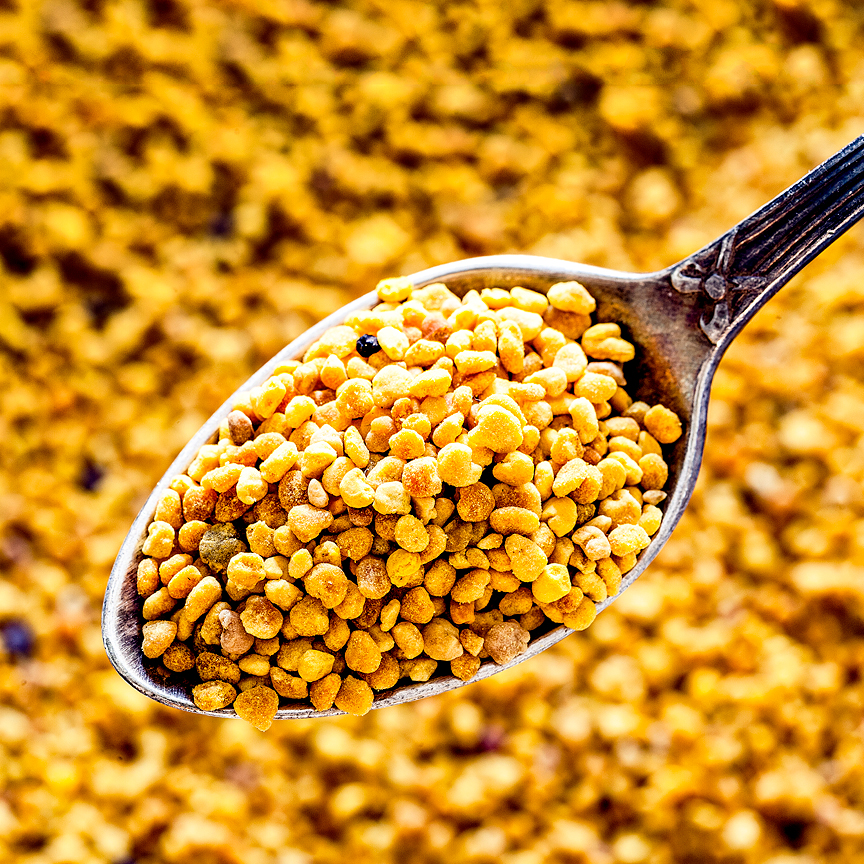
Bee Pollen
Read More +
Bee pollen is beneficial as a food and supplement. Bee pollen is a mixture of flower pollen, honeybee digestive juices, and nectar. The size and color of bee pollen vary with the plant species. The Chinese book Shen Nong Ben Cao Jing categorizes bee pollen as a food that can strengthen the body and prolong life. In Chinese palaces, bee pollen was made into a paste for healing and beauty purposes.*

Beet
Read More +
The beet is the featured ingredient in a popular Eastern European soup, known as borscht. Usually, the deep purple roots of beetroot are eaten boiled, roasted, or raw, and either alone or combined with any salad vegetable. The green, leafy portion of the beetroot is also edible. The young leaves can be added raw to salads, while the mature leaves are most commonly served boiled or steamed, in which case they have a taste and texture similar to spinach. Beetroot can be roasted, boiled or steamed, peeled, and then eaten warm with or without butter as a delicacy; cooked, pickled, and then eaten cold as a condiment; or peeled, shredded raw, and then eaten as a salad. Pickled beetroot is a traditional food in many countries.*

Bitter Melon
Read More +
Bitter melon (Momordica charantia) is also known as bitter gourd and balsam pear. The green oblong fruit grows on a climbing vine. Native to Africa, this green fruit has been considered to be the most bitter tasting vegetable known to mankind. Bitter melon has long been used as a folk remedy. Today bitter melon is used to support healthy blood sugar levels, weight management and overall wellness. Recent studies have found that bitter melon contains over 225 different phyto-constituents (phytochemicals). These different compounds may act separately or together to help lower blood sugar levels.*
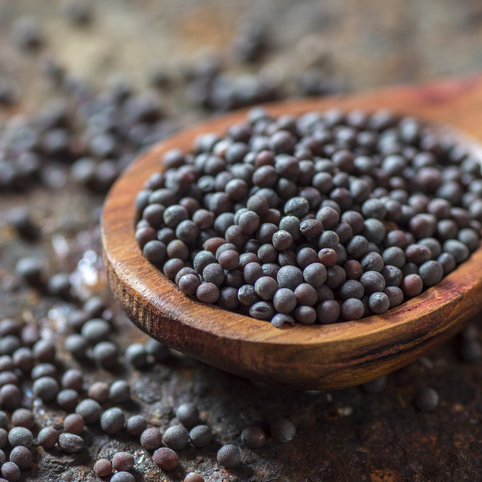
Black Goji Berry
Products +
Olioli
Read More +
Black Goji Berry is a rare plant originating from the Himalayan mountains in Central Asia. Research shows that black goji berries are rich in phytochemicals and show antioxidant capacities. The nutrients in black goji berries may significantly reduce gout-related inflammation. Black goji berries may also improve memory capacity. Researchers have found that black goji berry anthocyanins could improve the memory capacity of animal models by significantly reducing oxidative stress and inflammation in the hippocampus tissue.*
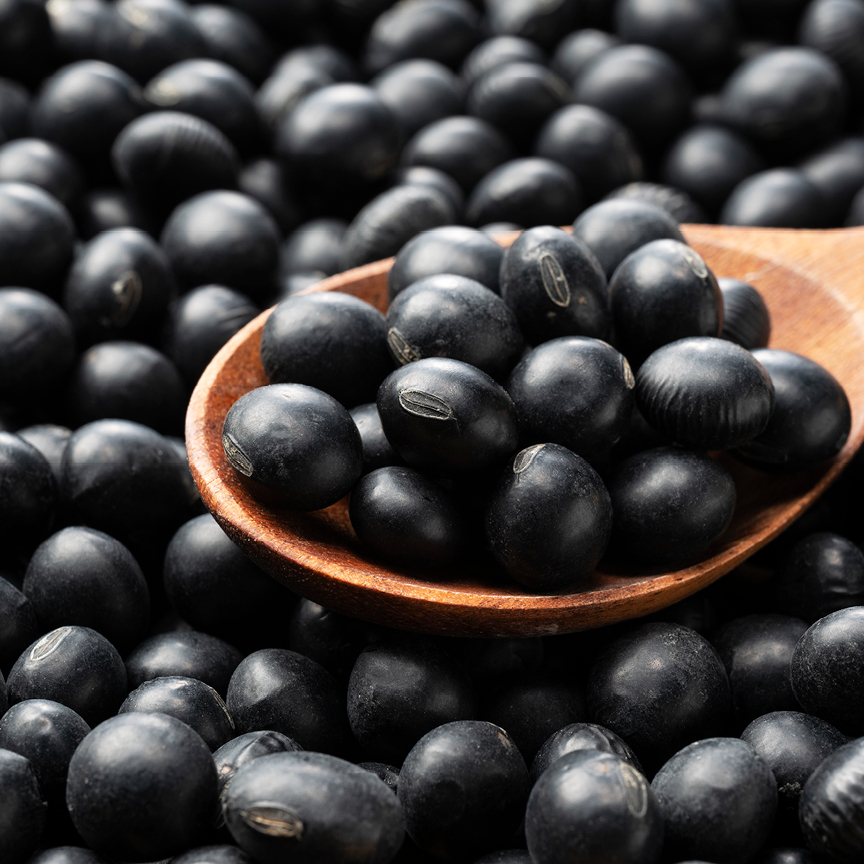
Black Soybean
Read More +
In Japan, black soybean tea often called kuromame is used traditionally as a wonderful secret to maintaining healthy weight.

Blueberry
Read More +
Blueberries (Vaccinium corymbosum) are a popular native North American fruit which grow on small bushes. Blueberries get their distinguishing blue hue from a type of flavonoid called anthocyanin which has an antioxidant effect.
Blueberries are known as a superfood to support bones, skin, digestion, mental health, heart and overall wellness.*

Broccoli
Read More +
Broccoli and Brussels sprouts are both cruciferous vegetables. They belong to the same family as cauliflower. Broccoli has been referred to as a “doctor for the poor.” It is ranked as one of the top 10 nutritious foods by Time Magazine in 2003.*
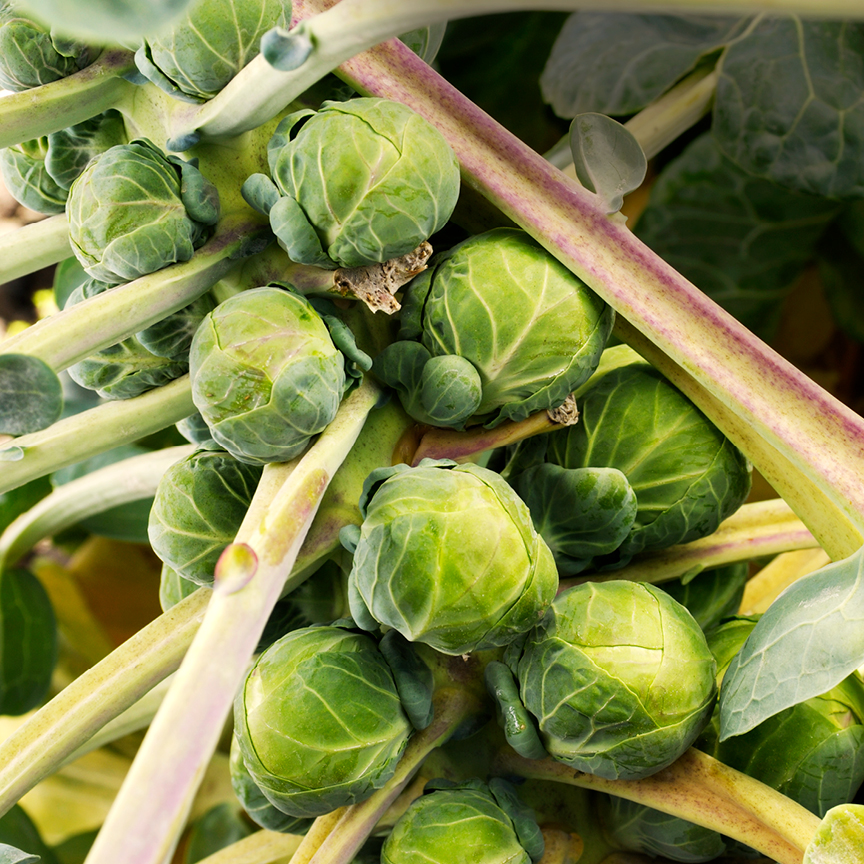
Brussels Sprouts
Read More +
Cabbage is a leafy green, red (purple), or white (pale green) biennial plant grown as an annual vegetable crop for its dense-leaved heads. Cabbages are mature when they are firm and solid to the touch. They are harvested by cutting the stalk just below the bottom leaves with a blade. Cabbage is prepared and consumed in many ways. The simplest options include eating the vegetable raw or steaming it, though many cuisines pickle, stew, sautée, or braise cabbage. Pickling is a common way of preserving cabbage, creating dishes such as sauerkraut and kimchi, although kimchi is more often made from Chinese cabbage. Raw cabbage is 92% water and is a rich source of vitamin C and vitamin K.*

Cabbage
Read More +
Cabbage is a leafy green, red (purple), or white (pale green) biennial plant grown as an annual vegetable crop for its dense-leaved heads. Cabbages are mature when they are firm and solid to the touch. They are harvested by cutting the stalk just below the bottom leaves with a blade. Cabbage is prepared and consumed in many ways. The simplest options include eating the vegetable raw or steaming it, though many cuisines pickle, stew, sautée, or braise cabbage. Pickling is a common way of preserving cabbage, creating dishes such as sauerkraut and kimchi, although kimchi is more often made from Chinese cabbage. Raw cabbage is 92% water and is a rich source of vitamin C and vitamin K.*

Cactus Fruit
Products +
Oxyginberry Beverage, toCARESS, Oxyginberry Capsules, Elemente Skin Care, Elemente Hair Care, Body Care, Oral Care, (Excluding Intensive Moisturizing Oil)
Read More +
“Cactus is an amazing plant that can survive in the harsh desert. The Mexican people view it as a beautiful symbol of life and hope, and they use it widely for food and medicine. Cactus is also highly regarded in traditional Chinese medicine (TCM). Written during the Qing Dynasty, Beng Cao Gang Mu Shi Yi (A Supplement to the Compendium of Materia Medica) recorded that cactus has a mild taste and is cold in nature, can promote the flow of qi (vital energy)…” “Moreover, it is low in calories and sodium. The excellent nutritional value of cactus is recognized across different cultures around the world. The cactus fruit has a prickly exterior. Apart from its rarity, the cactus fruit is difficult to harvest and requires a long growing period. Like the cactus, the cactus fruit needs a minimum of four years to grow and ripen before its nutrients can be tapped. Cactus has a long history of use as an ornamental plant and as food. Despite its prickly exterior, cactus has soft and succulent flesh and is very rich in phytochemicals and minerals. It is very important to choose the right species and right parts of the cactus. Within the thick, waxy cuticle of the cactus stem, for example, there is a thick membrane that helps prevent water loss from the cactus. Consuming this membrane in large amounts produces a laxative effect. Once cactus gel has been isolated from the interior of the cactus, it must be filtered to remove the seeds and cellulose and then processed into liquid form. Upon removal, the gel of the cactus oxidizes rapidly. Therefore, processing must take place immediately after the gel as been extracted from the cactus to produce the purest and most delicious extract possible. Even the harvesting hour can be critical. Research shows that it is best to harvest cactus pads earlier in the day because the acidity is the lowest at that time, which is better for health. During processing, it is best to avoid overheating cactus. Excessive heat may reduce nutrient content and degrade fiber content. Ample knowledge and skilled technique are needed to process cactus through a series of complex steps before it can be eaten. Plus, it has to be done quickly and carefully to maintain optimal nutritional value. After removing the spines and skin, the cactus gel has to be quickly filtered to remove unwanted substances. The cactus gel has to further undergo particle filtration, microfiltration and ultrafiltration before it is clean, pure, concentrated, and easily absorbed by the human body”.*
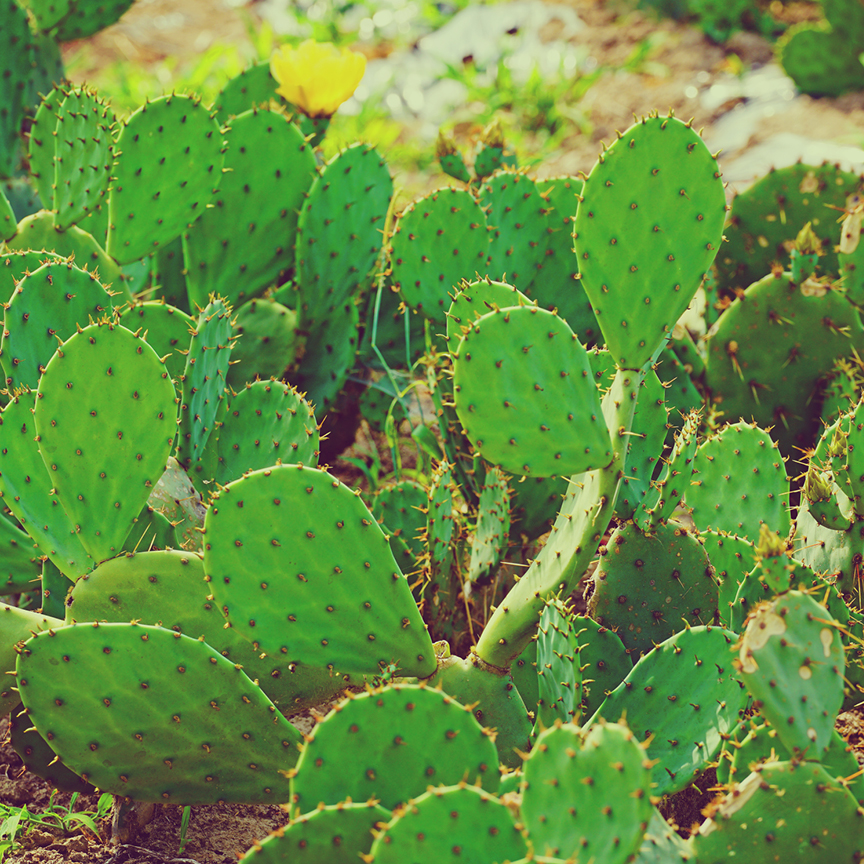
Cactus Pad
Products +
Millennium, Millennium Powder, Millennium Gold, Celebration,Oxyginberry Beverage, Oxyginberry Capsules, Elemente Skin Care, Elemente Hair Care, Body Care, Oral Care, (Excluding Intensive Moisturizing Oil)
Read More +
“Cactus is an amazing plant that can survive in the harsh desert. The Mexican people view it as a beautiful symbol of life and hope, and they use it widely for food and medicine. Cactus is also highly regarded in traditional Chinese medicine (TCM). Written during the Qing Dynasty, Beng Cao Gang Mu Shi Yi (A Supplement to the Compendium of Materia Medica) recorded that cactus has a mild taste and is cold in nature, can promote the flow of qi (vital energy)…” “Moreover, it is low in calories and sodium. The excellent nutritional value of cactus is recognized across different cultures around the world. The cactus fruit has a prickly exterior. Apart from its rarity, the cactus fruit is difficult to harvest and requires a long growing period. Like the cactus, the cactus fruit needs a minimum of four years to grow and ripen before its nutrients can be tapped. Cactus has a long history of use as an ornamental plant and as food. Despite its prickly exterior, cactus has soft and succulent flesh and is very rich in phytochemicals and minerals. It is very important to choose the right species and right parts of the cactus. Within the thick, waxy cuticle of the cactus stem, for example, there is a thick membrane that helps prevent water loss from the cactus. Consuming this membrane in large amounts produces a laxative effect. Once cactus gel has been isolated from the interior of the cactus, it must be filtered to remove the seeds and cellulose and then processed into liquid form. Upon removal, the gel of the cactus oxidizes rapidly. Therefore, processing must take place immediately after the gel as been extracted from the cactus to produce the purest and most delicious extract possible. Even the harvesting hour can be critical. Research shows that it is best to harvest cactus pads earlier in the day because the acidity is the lowest at that time, which is better for health. During processing, it is best to avoid overheating cactus. Excessive heat may reduce nutrient content and degrade fiber content. Ample knowledge and skilled technique are needed to process cactus through a series of complex steps before it can be eaten. Plus, it has to be done quickly and carefully to maintain optimal nutritional value. After removing the spines and skin, the cactus gel has to be quickly filtered to remove unwanted substances. The cactus gel has to further undergo particle filtration, microfiltration and ultrafiltration before it is clean, pure, concentrated, and easily absorbed by the human body”.*

Cantaloupe
Read More +
The cantaloupe is a fruit classified as a melon that is a variety of the muskmelon species. The cantaloupe most likely originated in a region from South Asia to Africa. It was later introduced to Europe, and around 1890, became a commercial crop in the United States. Cantaloupe is normally eaten as a fresh fruit, as a salad, or as a dessert with ice cream or custard. Melon pieces wrapped in prosciutto are a familiar antipasto. The seeds are edible and may be dried for use as a snack. Fresh cantaloupe is a rich source vitamin C and vitamin A.*

Carrot
Read More +
Carrots – The wild carrot may be found growing almost anywhere, including along roadsides and meadows in temperate North America and Europe countrysides. Carrot has been used as both food and as a herbal remedy since the 16th century.*
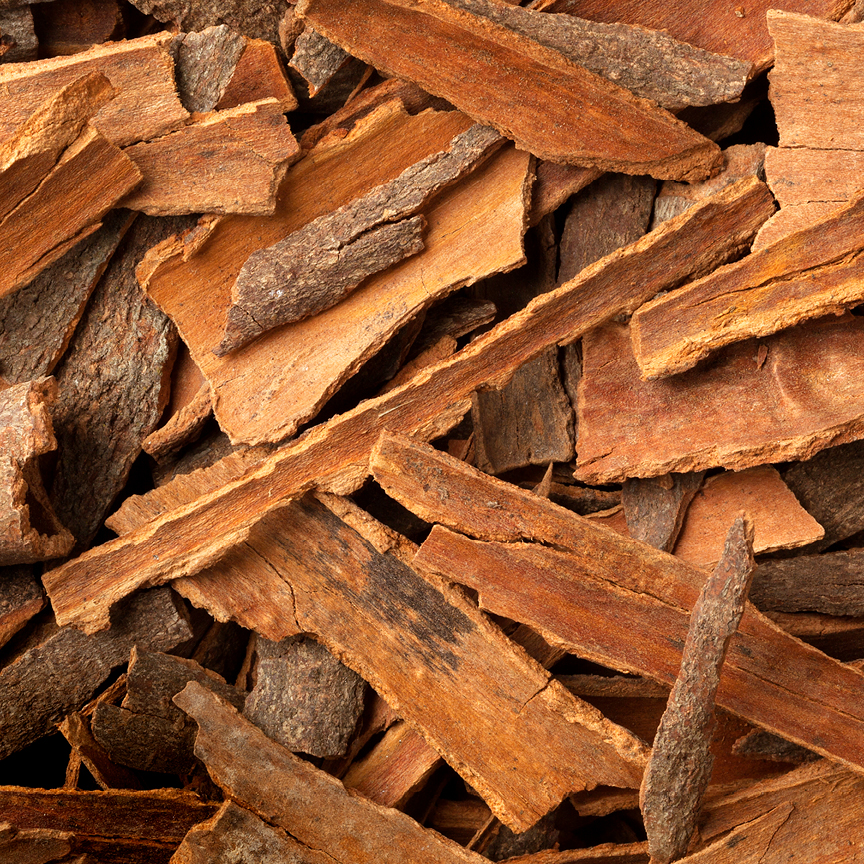
Cassia Bark
Read More +
Cassia bark (Chinese cinnamon), a commonly used Asian spice, comes from an evergreen tree with tiny white and yellow flowers. It is often used in toothpaste and mouthwash because it is sweet to the taste and a powerful antiseptic. It was also used traditionally to support a calm and relaxed mood.*
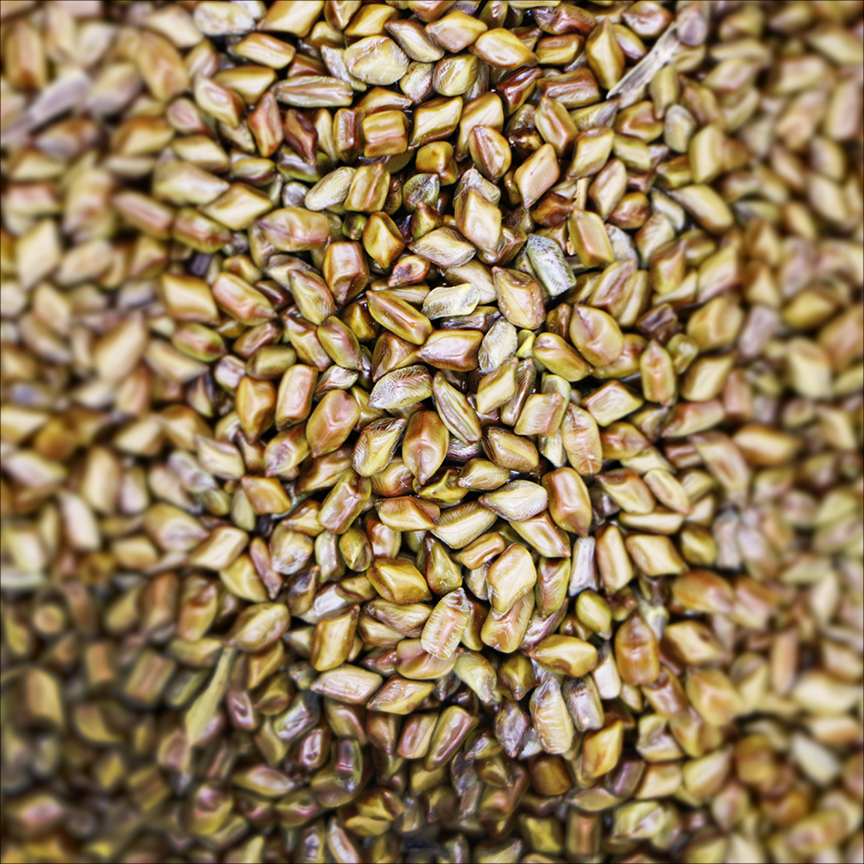
Cassia Tora Seed
Read More +
Cassia tora seeds are quite large and are used in Korea to make a delicious tea called Gyeolmyeongja Cha. In China, Cassia tora is classified within the family of legumes, or beans. Preparations made from the seeds are often used to support the body’s detoxification system. Cassia tora seeds are also used to support the circulatory system.*

Cauliflower
Read More +
Cauliflower is one of several vegetables in the genus Brassica, which is in the mustard family. There are hundreds of historic and current commercial varieties of cauliflower used around the world. White cauliflower is the most common color of cauliflower, having a contrasting white head (also called “curd”) surrounded by green leaves. Raw cauliflower provides 104 kilojoules (25 kilocalories) of food energy, and has a high content of vitamin C.*

Cherry
Read More +
A cherry is the fruit of many plants of the genus Prunus and is a fleshy stone fruit. A cherry tree will take three to four years once it is planted in the orchard to produce its first crop of fruit, and seven years to attain full maturity. Compared to sweet cherries, raw sour cherries contain 50% more vitamin C per 100 g and about 20 times more vitamin A.*
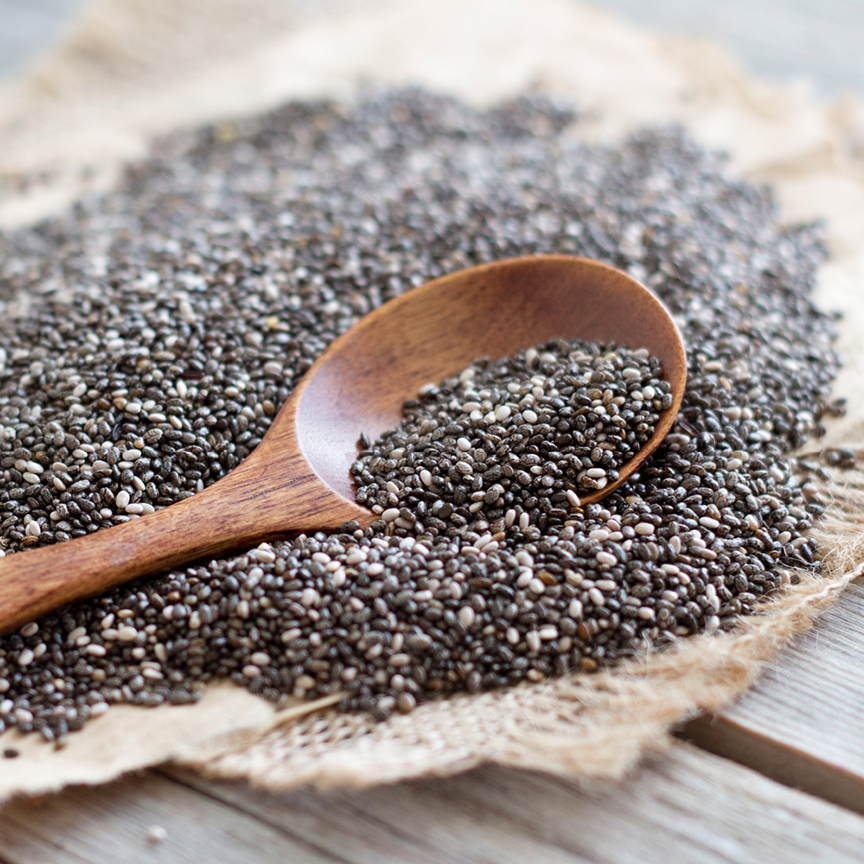
Chia Seed
Read More +
Chia seeds are one of the most abundant sources of omega-3 fatty acids, which includes alpha linolenic acid (ALA). Chia seeds have been used to support: the body’s normal anti-inflammatory processes, cardiovascular health, joint health, healthy cognitive function, neutralization of oxidative stress, normal healthy vision, and overall wellness. A plant in the Salvia genus, chia derives its name from the Latin word salvare, which means to save. For the ancient Aztec and Mayan cultures, Chia seeds were an important food. They were prized for their ability to provide sustainable energy. In fact, “chia” is the ancient Mayan word for “strength.” Chia seeds are a good source of fiber that can help maintain the digestive tract and cleanse and soothe the colon. Fiber acts like a sponge, absorbing toxins and strengthening movement of the colon. Chia seed enzymes act as a catalyst in the digestive process. An additional benefit, chia seeds do not have a fishy after taste like other sources of omega-3 fatty acids, such as fish oils.*

Chinese Dodder Seed
Read More +
Chinese Dodder seed – Although unpopular in some areas for its habit of strangling host plants, this weed is quite useful as an herbal remedy. Since the first century, dodder has been included in herbal manuscripts. Although no longer used to “lift a melancholy humour,” dodder does contain beneficial flavonoids still in use today.*
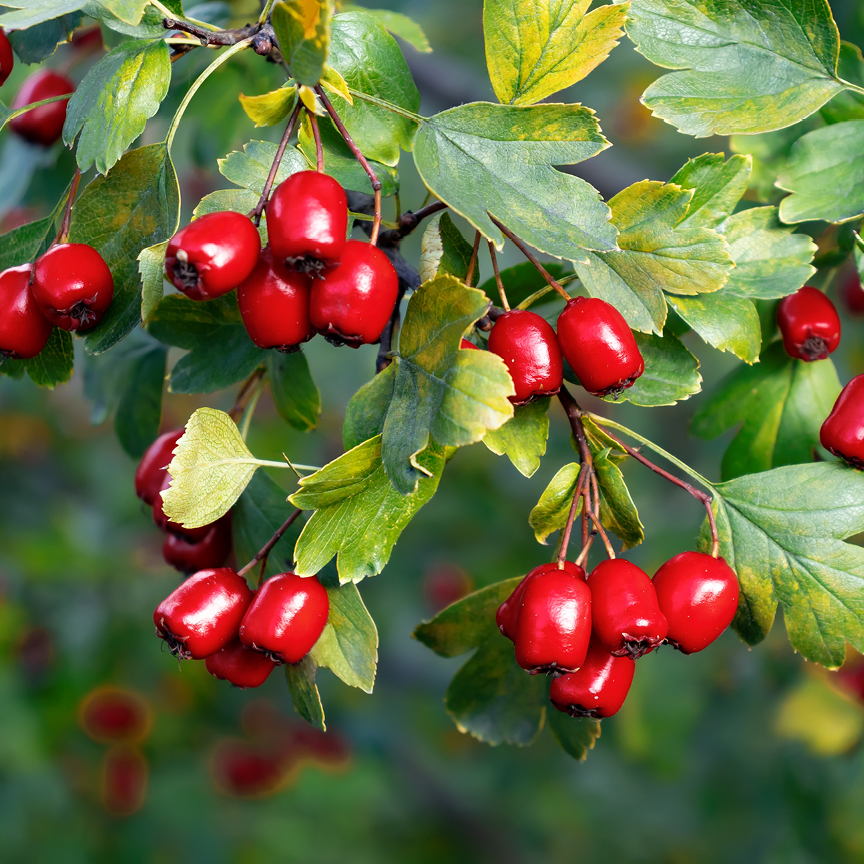
Chinese Hawthorn
Read More +
Chinese Hawthorn – “There are about 900 different species of hawthorn shrub. The hawthorn shrub is one of the most beautiful in the world. It traditionally blooms from April to June. It is traditionally viewed as a plant that [supports] the heart”. *

Chinese Lovage Root
Read More +
Chinese lovage root have been found by scientists to be a natural diuretic and is known to cleanse the body of excess fluid. Chinese lovage or Ligusticum sinense is a delicate leafy green plant with purple stems. Japanese scientists have found Ligusticum sinense has anti-inflammatory effects.*
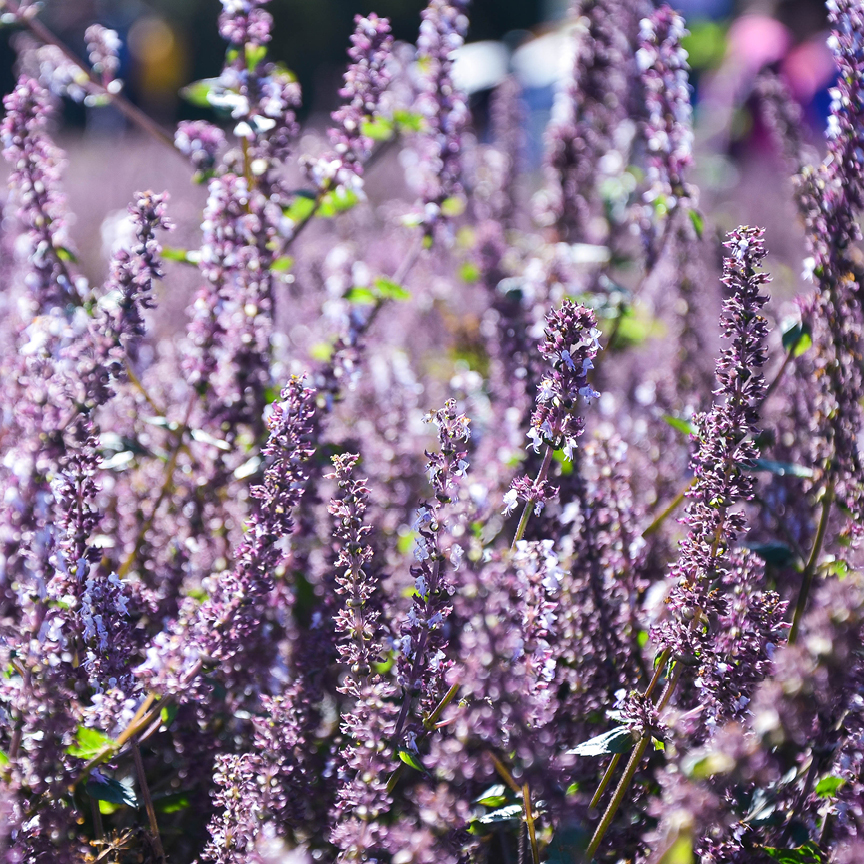
Chinese Mesona
Read More +
Chinese Mesona (Mesona chinensis) has jagged green, tear drop shaped leaves and is part of the mint family. Chinese mesona is used as part of a plant-based diet to make grass jelly and black grass jelly which is known to promote digestive and liver health, and to support blood sugar levels.*
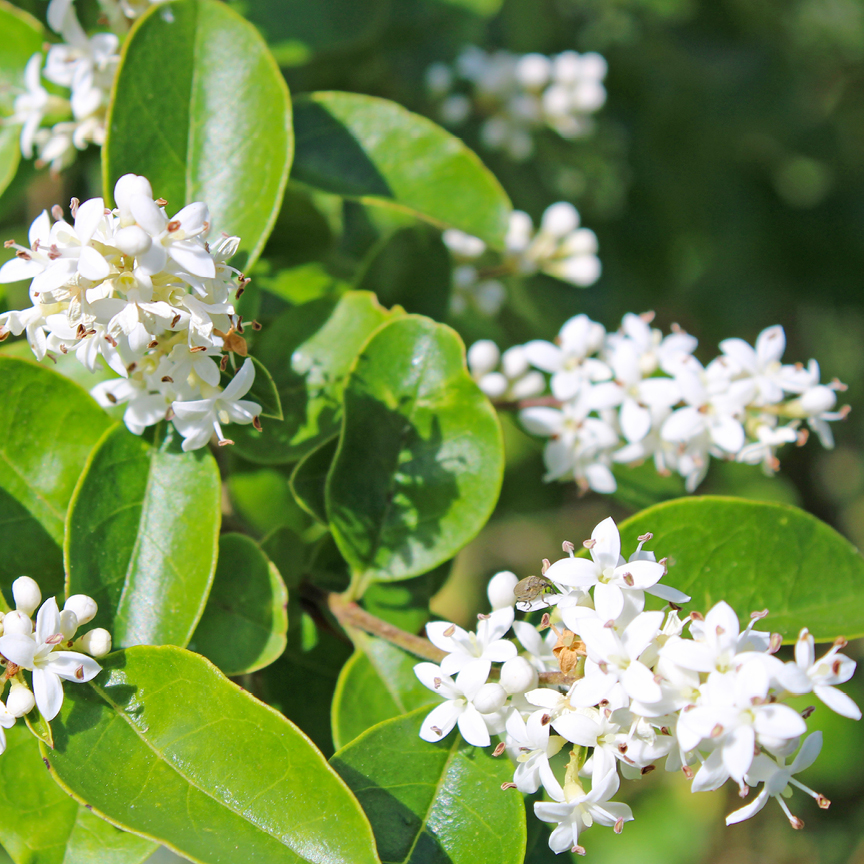
Chinese Privet
Read More +
The Chinese privet plant has large, glossy leaves and creamy flowers with black berries. This evergreen tree has been used in China for thousands of years to provide overall nourishment and strength.*

Chinese Quince Fruit
Read More +
Chinese Quince Fruit grows on sturdy drought resistant trees or shrubs native to the middle east and Asia. The strongly perfumed fruit ripens to a bright golden yellow color in the autumn. Quince is from the same family as pears and apples but the fruit from most varieties are too hard, tart, or astringent to eat. A study conducted by the prestigious Iranian medical school Research Council of Isfahan University of Medical Sciences, indicates that quince fruit is effective in helping to balance the effects of digestive inflammation and stomach distress. This study supports theuse of the fruit in traditional herbal applications for gastrointestinal conditions.*
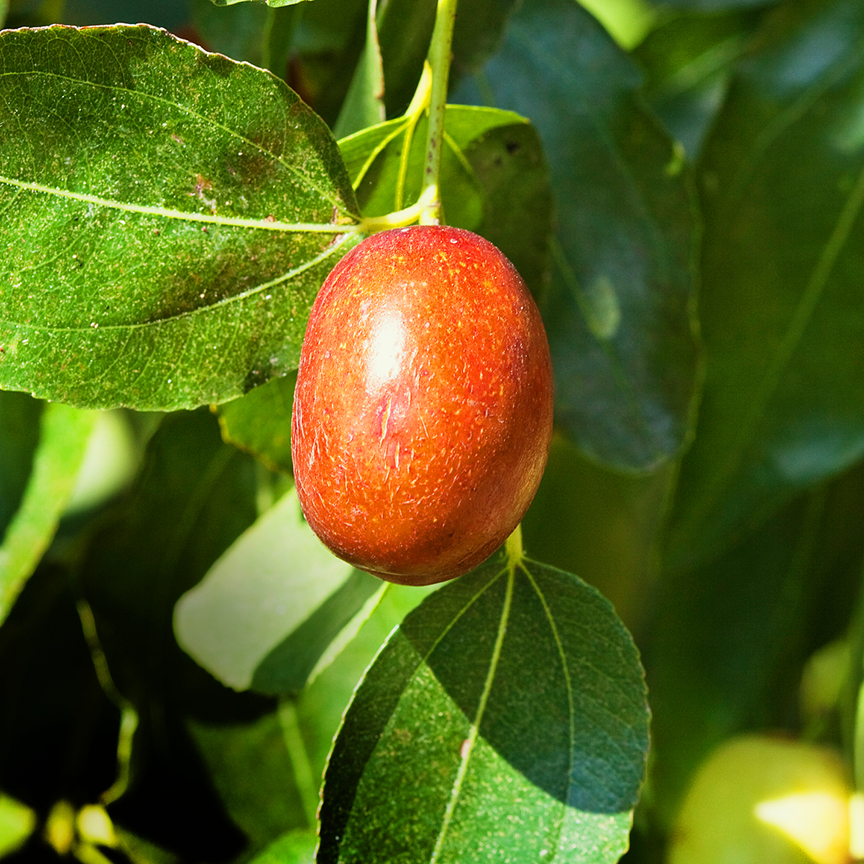
Chinese Red Date
Read More +
Chinese Red Dates are one of man’s best health foods containing numerous nutrients. Dates have been cultivated for over 3,000 years in China. They are the mature fruits of jujube trees. Red dates are the most commonly used dates to restore and balance appetite, as well as supporting the digestive tract . It is known to support liver function to help cleanse the body. Studies have also shown that red dates help support the body’s lungs and oxygen levels.*
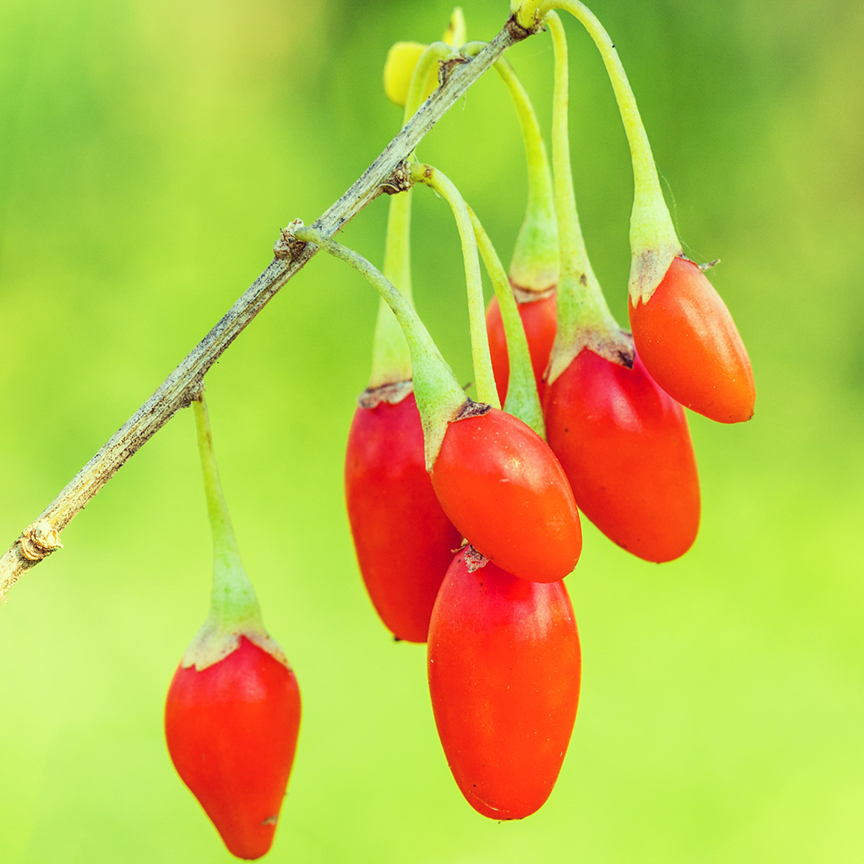
Chinese Wolfberry
Read More +
Chinese wolfberries, also known as gogi berries, have long been used as a Traditional Chinese Herb to support the liver and kidneys and help promote vision.*
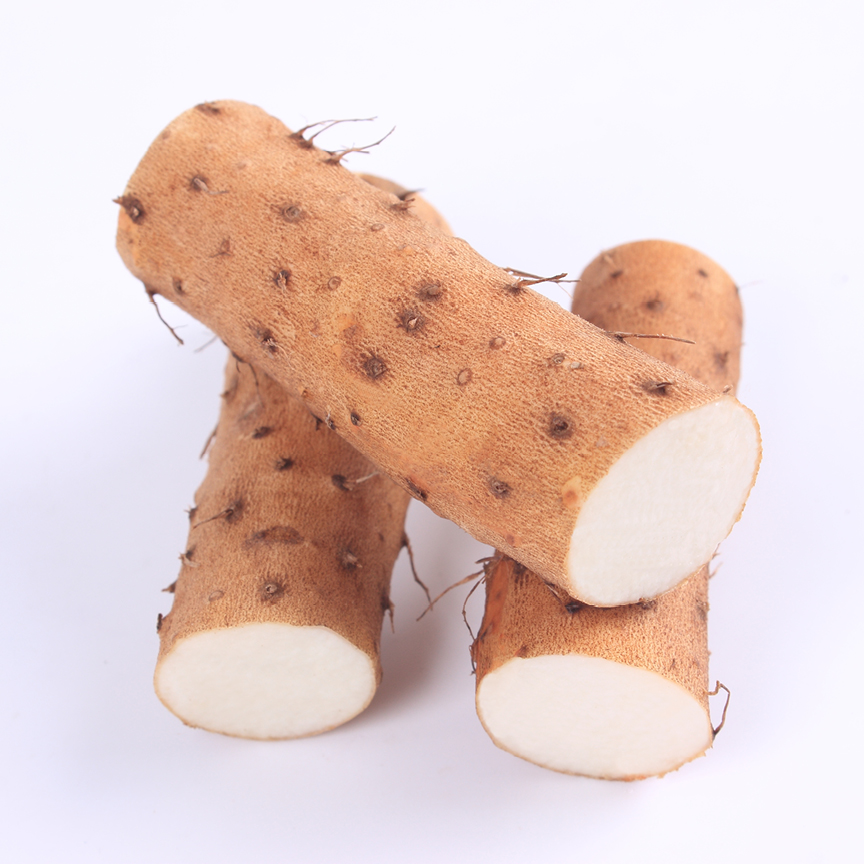
Chinese Yam
Read More +
Chinese yam (Dioscorea oppositifolia) is a climbing vine with small heart shaped green leaves and white flowers that smell like cinnamon. It has long, straight chalk like white tubers (roots). It is known as shan yao and is native to China, Japan, Korea and Taiwan. Chinese yam is a Traditional Chinese herb used to nourish and strengthen the spleen, lungs, stomach and kidneys. It is often used to support the discomforts of menopause because of its nourishing, moisturizing and cooling effects along with support against night sweats and mood swings. It also supports normal menstruation and fatigue.*

Chrysanthemum
Read More +
Chrysanthemum is excellent for dispelling heat and counteracting inflammation. Every part of the chrysanthemum is edible. The young leaves have a tangy taste and provide flavor or garnish for vegetable dishes. Traditionally, chrysanthemum is used to help sooth sore throats, combat inflammation, soothe the digestive system, support the respiratory and circulatory systems, and calm the nerves.*

Collard Green
Read More +
Collard greens are grown as a food crop for their large, dark-green, edible leaves, which are cooked and eaten as vegetables. Collard greens have been eaten over centuries, with evidence showing that the ancient Greeks cultivated the plant. Collard greens are available year-round, but are tastier and more nutritious in the cold months, after the first frost. For best texture, the leaves are picked before they reach their maximum size, at which stage they are thicker and are cooked differently from the new leaves. Raw collard greens are 90% water and contain a substantial amount of vitamin K. They are also rich sources of vitamin A and vitamin C.*
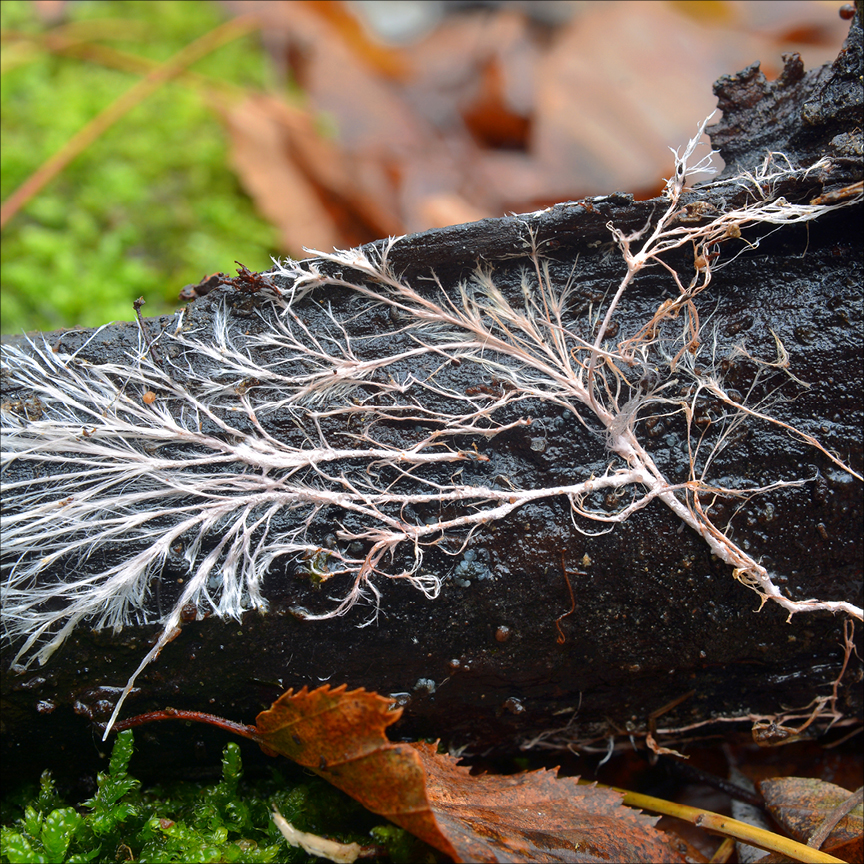
Cordyceps Mycelium
Read More +
“High up in the mountains of China grows one of the most valued mushrooms: Cordyceps sinensis. Growing in trying conditions has endowed Cordyceps sinensis with resilient qualities, and eating it can increase one’s vigor and tenacity. For centuries, Cordyceps sinensis has been used in traditional Chinese medicine (TCM) to improve respiratory health and nourish the kidneys. According to the book Beng Cao Cong Xin (New Compilation of Materia Medica). Written during the Qing Dynasty, Cordyceps sinensis helps to protect the lungs and is beneficial for the kidneys. It replenishes vital energy, helps to stop bleeding, and reduces phlegm. It also helps to relieve cough and ease swallowing. Cordyceps sinensis has long been regarded to possess capabilities to nourish the body and promote longevity.” “Wild cordyceps grows in mountainous regions, at an altitude of about 3,000 to 4,000 meters above sea level, and can only be harvested during the rainy season. Moreover, cordyceps is very hard to find; one has to keep one’s face close to the ground to be able to spot it. These harsh growth conditions make wild cordyceps difficult to collect. Despite a huge market demand for it, wild cordyceps is extremely rare and cannot be cultivated. Hence, cordyceps is very expensive. The quality of cordyceps available for sale also tends to vary widely, and the market is flooded with counterfeit cordyceps. However, the general public is unable to differentiate the authenticity and quality of cordyceps. In recent years, the market has been filled with cordyceps contaminated by heavy metals in the soil of producing areas as well as cordyceps with lead inserted into it to increase weight and boost profits. These situations pose dangerous health threats to consumers.” “The mycelium of Cordyceps sinensis can be cultivated. This is made possible by separating the mycelia from wild Cordyceps sinensis and culturing them under proper conditions. The mycelium acquired through this method has considerable nutritional value. Only cordyceps mycelium of certain verified species of cordyceps shares similar nutritional value with Cordyceps sinensis. Of over 400 species of cordyceps, only about 10 species have nutritional value, and different species have different nutritional value. The nutritional value of cordyceps is determined by the amount of cordycepin (a polysaccharide) it contains; there is little health benefit if the level of cordycepin is too low. Therefore, only cordyceps strains whose species, source and cordycepin concentration have been authenticated are of premium quality and have high nutritional value”.*

Ginger
Read More +
Ginger is one of the most popular spices in the world. It has been used since ancient times to help preserve food and battle digestive problems. Chinese sailors used ginger to relieve seasickness. 16th-century writer John Baret described gingerbread as “a kind of cake or paste made to comfort the stomach.” Ginger is well known to soothe the stomach and support the digestive tract. In addition, studies show ginger may also be anti-inflammatory.*

Ginkgo Nut
Read More +
Ginkgo biloba has been used as a Traditional Chinese herb for around 5,000 years to support the heart, brain, and lungs. It has been found to support memory during aging and promotes the feeling of well-being.*

Grape
Read More +
The grape plant is a perennial and deciduous woody vine. The fruit of thegrape plant is the most commonly eaten part of the plant. Food markets today include a wide variety of grapes. The most popular variety is the seedless grape. However, choosing seedless grapes means missing out on a very important type of phytochemical in grape seed: oligomeric proanthocyanidins (OPCs) which defend against free radicals and oxidative damage. OPCs may help in maintaining eye health.*
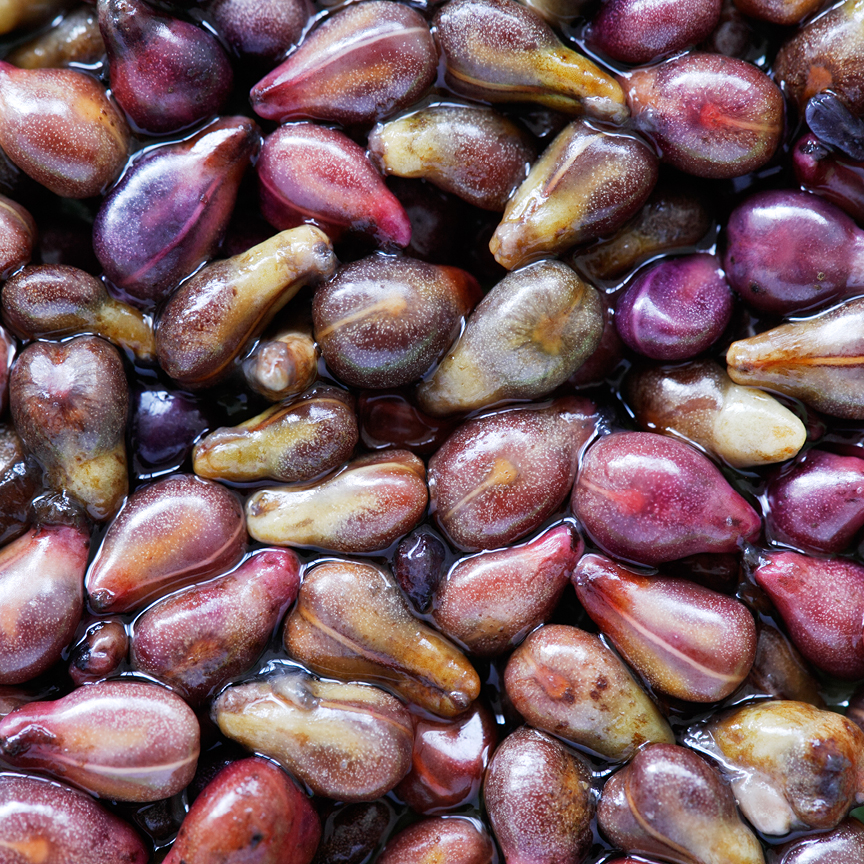
Grape Seed
Products +
Nutrifresh Original, Nutrifresh Mixed Fruit, Nutrifresh Strawberry, E•View, Oxyginberry Capsule, Vision, Oxyginberry Beverage, Elemente Skin Care, Elemente Hair Care, Body Care, Oral Care, (Excluding Intensive Moisturizing Oil)
Read More +
Grape seed is one of the healthiest part of the grape. The grape plant is a perennial and deciduous woody vine. Produce markets today include a wide variety of grapes, the most popular variety is the seedless grape. However, choosing seedless grapes means missing out on important phytonutrients. Grape seed may help inhibit oxidative damage, promoting radiant, youthful, beautiful skin.*
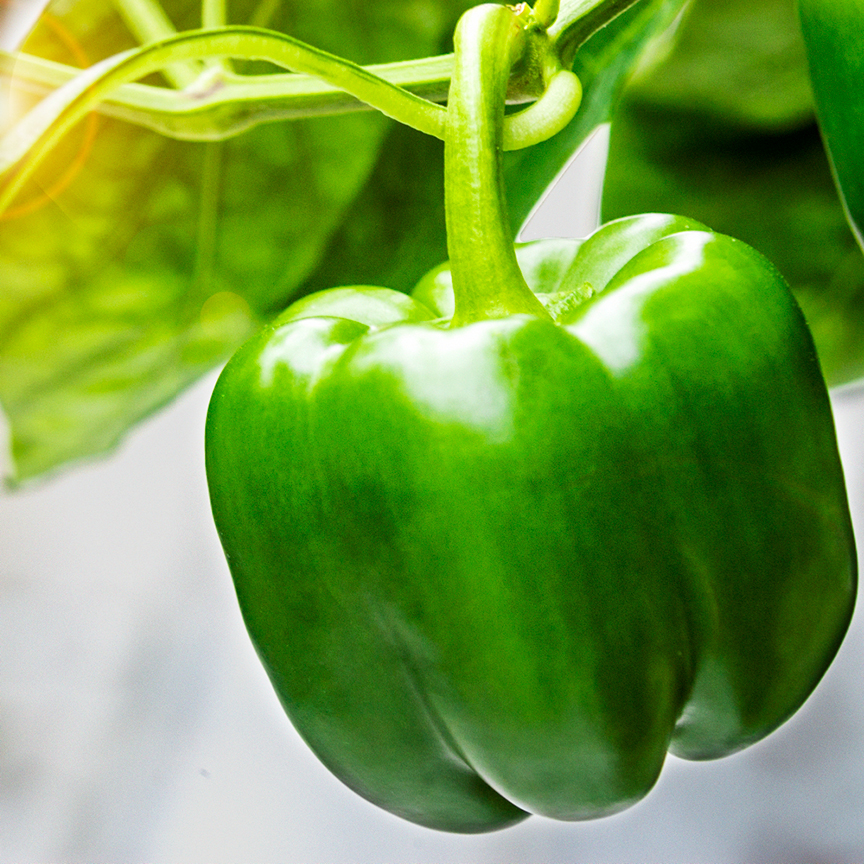
Green Bell Pepper
Read More +
Like the tomato, green bell peppers are botanical fruits but culinary vegetables. Pieces of bell pepper are commonly used in garden salads and as toppings on pizza. There are many varieties of stuffed peppers prepared using hollowed or halved bell peppers. Bell peppers may be used in the production of the spice paprika. Green bell peppers provide an array of vitamins and minerals, particularly vitamin C. Plus, they’re a good source of fiber and relatively low in carbohydrates.*

Green Tea
Read More +
Green Tea (Camellia sinensis) leaf is used in Japan to promote longevity and wellness. It is known to contain polyphenols, a type of phytochemical with antioxidant like properties. Green tea may be decaffeinated by roasting the leaves at low temperatures then treating them with carbon dioxide and water. Green tea is used to support: brain health, the cardiovascular system, healthy blood sugar levels, normal anti-inflammatory functions, the immune system, and fat burning.*

Japanese Kelp
Read More +
Japanese kelp or Laminaria japonica has large flat leaves and dark green color. It is used in Asian cooking and as a health supplement. It has been said that seaweed contains the ocean’s nutrients. Japanese kelp is used to support bone and joint health due to its anti-inflammatory properties.*

Jasmine
Read More +
Jasmine is a genus of shrubs and vines in the olive family. Jasmines are widely cultivated for the characteristic fragrance of their flowers. The fruits of jasmines are berries that turn black when ripe. Jasmines are native to tropical and subtropical regions of Eurasia, Africa, Australasia, and Oceania. Jasmine is often brewed in tea, and can act as a powerful antioxidant for the body.*

Kale
Read More +
Kale, or leaf cabbage, is grown for its edible leaves. Kale plants have green or purple leaves and are considered to be closer to wild cabbage. Kale originates from Northern Middle English cale for various cabbages. During World War II, the cultivation of kale (and other vegetables) in the U.K. was encouraged by the Dig for Victory campaign. The vegetable was easy to grow and provided important nutrients missing from a diet because of rationing. Raw kale is a rich source of vitamin A, vitamin C, and vitamin K.*

Kiwifruit Seed
Read More +
Kiwifruit seeds are tiny, black, edible gems that are packed with a powerful punch. The kiwifruit or Chinese gooseberry is native to Asia. A schoolteacher first introduced the fruit in New Zealand in 1904. The New Zealanders began cultivating the fruit and called it “kiwi” after their national bird. The seeds are a source of alpha-linolenic acid (ALA) which is an important omega-3 essential fatty acid found only in plants. ALA is necessary for good health and it must be obtained through diet because the human body does manufacture it on its own.*

Knotweed
Read More +
Knotweed – This bamboo-like plant can be made into one of China’s four great herbal tonics. Its native habitat is actually Japan, where it grows in warm waste-lands. One of the many uses of knotweed is to help calm the nerves.*

Kumazasa
Read More +
Kumazasa is a large species of bamboo grass with leaves that are initially uniform green in color but develop light-colored edges as they mature overwinter. In its native Japan, it is found as a dense covering on some forest floors. Kumazasa leaves are traditionally used to make herbal tea, and possess the potential for a wide variety of uses.
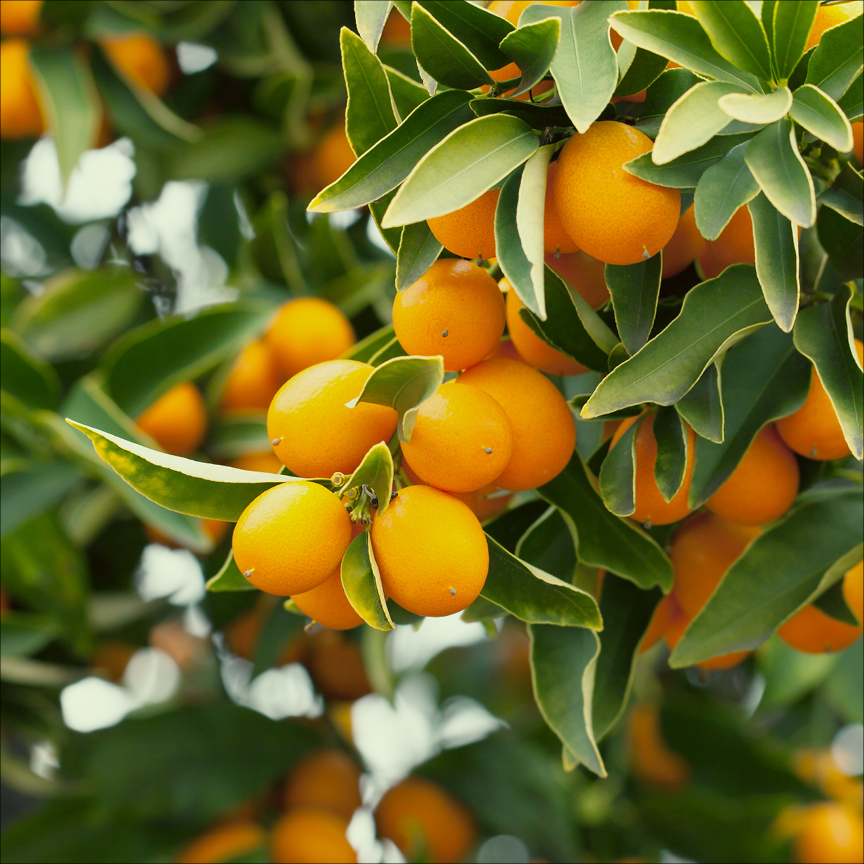
Kumquat
Read More +
Kumquats are a group of small, fruit-bearing trees in the citrus family. The edible fruit closely resembles the orange in color and shape but is much smaller, being approximately the size of a large olive. The kumquat is a fairly cold-hardy citrus. The kumquat plant is native to Southern China and is now found around the world. The raw kumquat is a rich source of vitamin C.*

Lemon
Read More +
The lemon is a species of small evergreen tree in the flowering plant family Rutaceae, native to Asia. While the origin of the lemon is unknown, lemons are thought to have first grown in a region in northeast India, northern Myanmar, or China. A genomic study of the lemon indicated it was a hybrid between bitter orange and citron. Lemon is a rich source of vitamin C, providing 64% of the DV. Lemon juice, rind, and peel are used in a wide variety of foods and drinks. The whole lemon is used to make marmalade, lemon curd, and lemon liqueur. Lemon slices and lemon rind are used as a garnish for food and drinks. Lemon zest, the grated outer rind of the fruit, is used to add flavor to baked goods, puddings, rice, and other dishes.*

Lettuce
Read More +
Lettuce is most often grown as a leaf vegetable, but sometimes for its stem and seeds. Lettuce is most often used for salads, although it is also seen in other kinds of food, such as soups, sandwiches, and wraps. Lettuce was originally farmed by the ancient Egyptians, who transformed it from a plant whose seeds were used to obtain oil into an important food crop raised for its succulent leaves and oil-rich seeds. Lettuces have a wide range of shapes and textures, from the dense heads of the iceberg type to the notched, scalloped, frilly or ruffly leaves of leaf varieties. Depending on the variety, lettuce is an excellent source of vitamin K and vitamin A.*

Licorice Root
Read More +
Licorice root has been used for food and herbal tonics for thousands of years. Many of the oldest and most respected herbal writings including Shen Nong Ben Cao Jing (The Divine Farmer’s Materia Medica) recorded the use of licorice. Licorice is known to exhibit anti-inflammatory properties. Traditional Chinese Herbalists often prescribed licorice to support the respiratory system. Also, an adaptogen, licorice improves the body’s response to stress. In addition, scientist have found that licorice may help support the hormonal and endocrine system.*

Lime
Read More +
A lime is a citrus fruit, which is typically round and green in color. To prevent scurvy during the 19th century, British sailors were issued a daily allowance of citrus, such as limes and lemons. The use of citrus was initially a closely guarded military secret, as scurvy was a common scourge of various national navies, and the ability to remain at sea for lengthy periods without contracting the disorder was a huge benefit for the military. In cooking, lime is valued both for the acidity of its juice and the floral aroma of its zest. It is a common ingredient in authentic Mexican, Vietnamese, and Thai dishes. Limes are a significant source of vitamin C.*

Lion’s Mane Mushroom
Read More +
Lion’s mane mushroom (Hericium erinaceus) is grown throughout Vietnam, China, and Japan. It has long been used traditionally to support memory, and modern science is confirming the mushroom’s many benefits for brain health. It also has particularly important effects on the central nervous system.*

Loquat
Read More +
Loquat (Eriobotrya japonica) is a large evergreen shrub native to China which has been cultivated for over 1,000 years for its small tangy orange fruit and for its leaves which are used to make tea. Loquat leaf is used as a Traditional Chinese Herb to support liver detox, the stomach, lungs, heart, the immune system and to help ease nausea and gastrointestinal distress.*
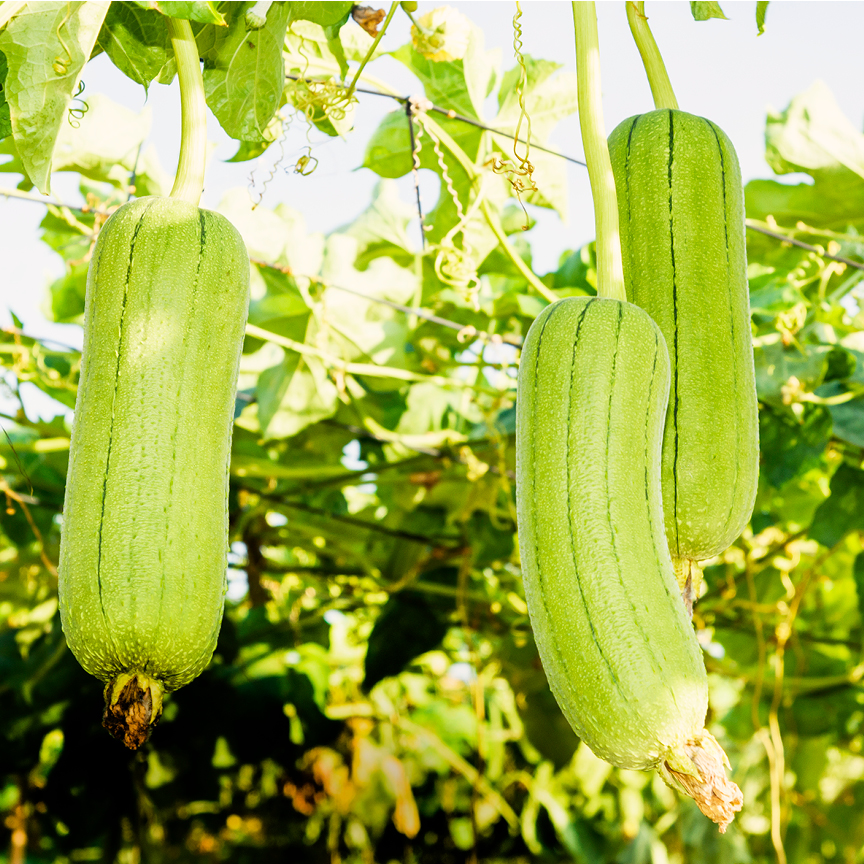
Luffa
Read More +
Luffa is an annual herb shaped like a cylinder or wooden club. It has a green exterior and soft flesh with black or white shiny seeds. Its tender flesh is often stir-fried or boiled in soup. While the luffa gourd is known as a food, health and beauty product, not many people know of its many uses as a health supplement.*
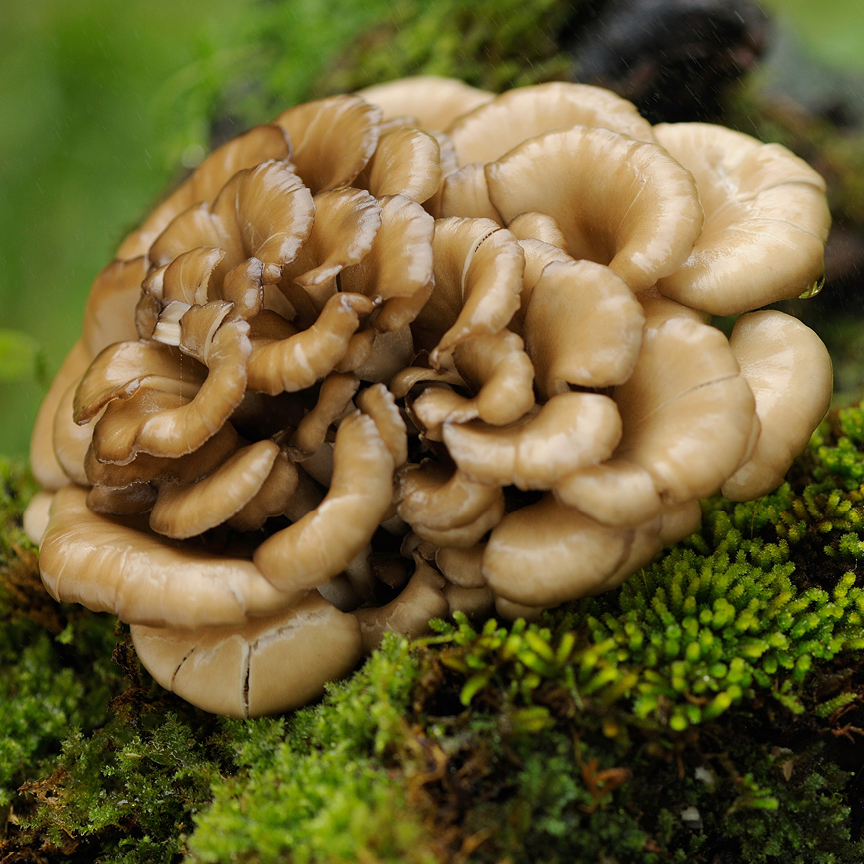
Maitake Mushroom
Read More +
Maitake mushrooms are known in Japan as “the dancing mushroom.” According to a Japanese legend, a group of Buddhist nuns and woodcutters met on a mountain trail, where they discovered a fruiting of maitake mushrooms emerging from the forest floor. Rejoicing at their discovery of this delicious mushroom, they danced to celebrate. Maitake mushrooms are high in polysaccharides, beta-glucans, phospholipids, nucleotides, and unsaturated fatty acids. Because of the high levels of these compounds, maitake mushrooms are said to be one of the most potent immune stimulants among all mushrooms.*
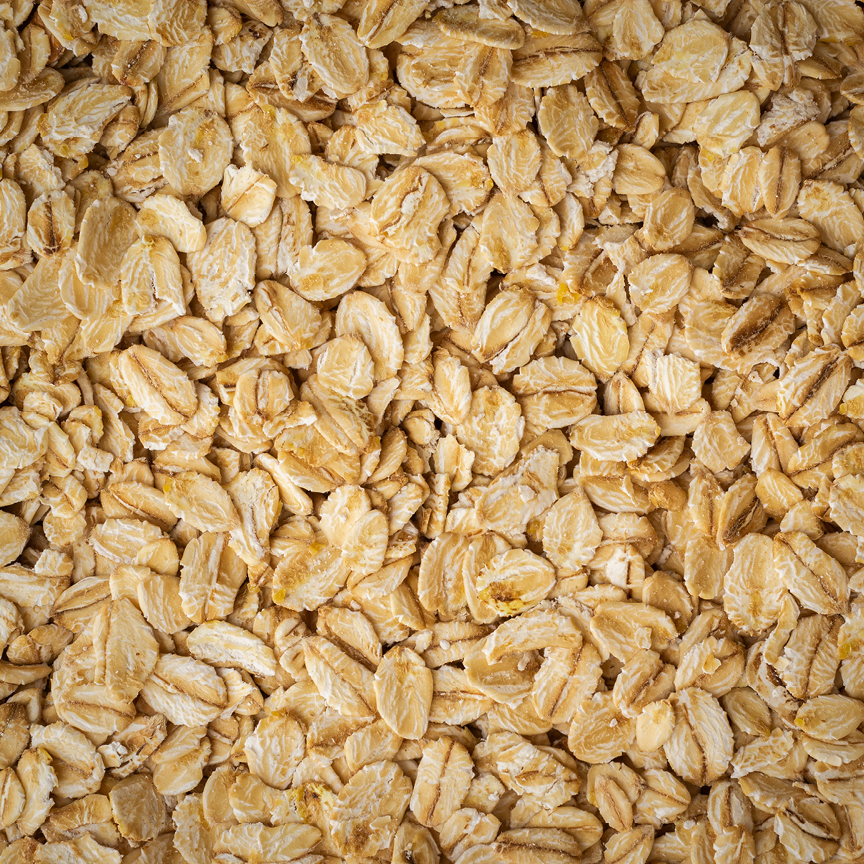
Oat fiber
Read More +
Oat fiber is made from heart healthy natural oats. Oat fiber is fat free, cholesterol free, low calorie, low net carbs and contains more than 90% natural fiber, making it an excellent choice for daily dietary fiber needs.*

Olive Leaf
Products +
Olioli
Read More +
Olive Leaf comes from the olive tree: a small, evergreen tree native to the Mediterranean region. Studies suggest that oleuropein, the main phenolic compound in olive leaves, may exert protective actions on the kidneys. Oleuropein has the potential to be an alternative treatment for acute kidney injury. Antioxidants in olive leaves may help lower and control blood sugar. Olive leaf extract may also reduce the body’s insulin resistance, and may prevent arterial plaque formation in blood vessels.*

Orange
Read More +
The orange is the fruit of the species Rutaceae. It originated in a region encompassing Southern China, Northeast India and Myanmar. Earliest mention of the sweet orange was in Chinese literature in 314 BC. As of 1987, orange trees were found to be the most cultivated fruit tree in the world. Fresh oranges are known to be rich in vitamin C. Oranges are a source of fiber and potassium.*

Oriental Raisin Tree
Read More +
Oriental Raisin Tree (Hovenia dulcis) is a hardy tree found in Eastern China, Japan and Korea. The sweet fragrant fruits look and taste like raisins when dried and are eaten fresh or dried and used as a tea. It is used traditionally to treat hangovers after excessive drinking, support healthy liver function, aid the immune system and support healthy blood sugar levels.*

Peach
Read More +
Peaches are sweet and juicy and are one of the most popular fruits in the world. Peach trees cannot endure extreme cold, but flourish in warm climates. In Asia, various parts of the peach have been traditionally used for hundreds of years. Modern herbalists use the entire peach to support overall wellness. Today, Chinese herbalists recommend the peach seed to help reduce inflammation.*
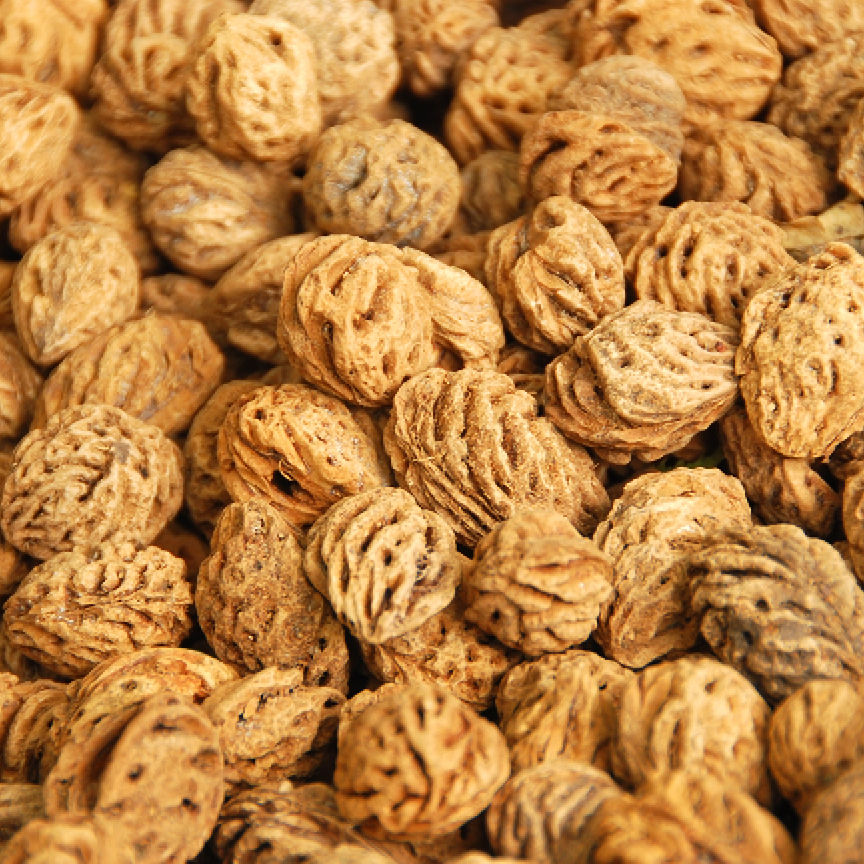
Peach Seed
Read More +
Peaches are sweet and juicy and are one of the most popular fruits in the world. Peach trees cannot endure extreme cold, but flourish in warm climates. In Asia, various parts of the peach have been traditionally used for hundreds of years. Modern herbalists use the entire peach to support overall wellness. Today, Chinese herbalists recommend the peach seed to help reduce inflammation.*

Pear
Read More +
The pear is thought to have originated in present-day Western China in the foothills of the Tian Shan, a mountain range of Central Asia. The popular fruit soon spread to Europe and other parts of the world. Several species of pears are valued for their edible fruit and juices, while others are cultivated as trees. Pears are consumed fresh, canned, as juice, and dried. The juice can also be used in jellies and jams, usually in combination with other fruits, including berries. Raw pear is 84% water and supplies 239 kilojoules (57 kilocalories) of food energy, as well as a moderate amount of dietary fiber.*

Pearl
Read More +
Pearls are revered by women in the Orient as one of the most precious ingredients available to bestow beauty. In ancient times, pearls were considered to be a royal treat. Fresh water pearls are cold in nature. Pearl contains many trace elements necessary for the human body and has been traditionally used to enhance beauty and benefit health. Research shows that it can help improve memory and enhance nervous system function. They are also known to contain calcium.*

Peppermint
Read More +
The cool green leaves of the peppermint plant have been used for centuries by Chinese herbalists to support the respiratory system. Peppermint is one of the oldest herbs used for culinary and herbal products.*

Perilla
Read More +
Perilla is a branching, tender plant with white to lavender flowers. When mature, the perilla plant grows to about four feet high. It is native to India, Burma, Japan, Korea and China. Traditional Chinese Herbalists have recorded the use of perilla as far back as 1,500 years ago. Perilla, a member of the mint family, is used by many cultures, especially in Japanese cuisine. Scientist have shown that this Traditional Chinese Herb may help support the digestive system.*

Pineapple
Read More +
The pineapple is a tropical plant with edible fruit. Indigenous to South America, it made its way to Europe in the 17th century and became a cultural icon of luxury. Pineapples grow as a small shrub; the individual flowers of the unpollinated plant fuse to form a multiple fruit. In the wild, pineapples are pollinated primarily by hummingbirds. Raw pineapple is a rich source of manganese and vitamin C.*

Plum
Read More +
Plums (Prunus spp) have been grown around the world for thousands of years. They are often dried or juiced and used to sweeten dishes and desserts. They are known for their laxative effect. Plums contribute a rich, sweet flavor while supporting the cardiovascular system, bone strength, liver and digestion.*
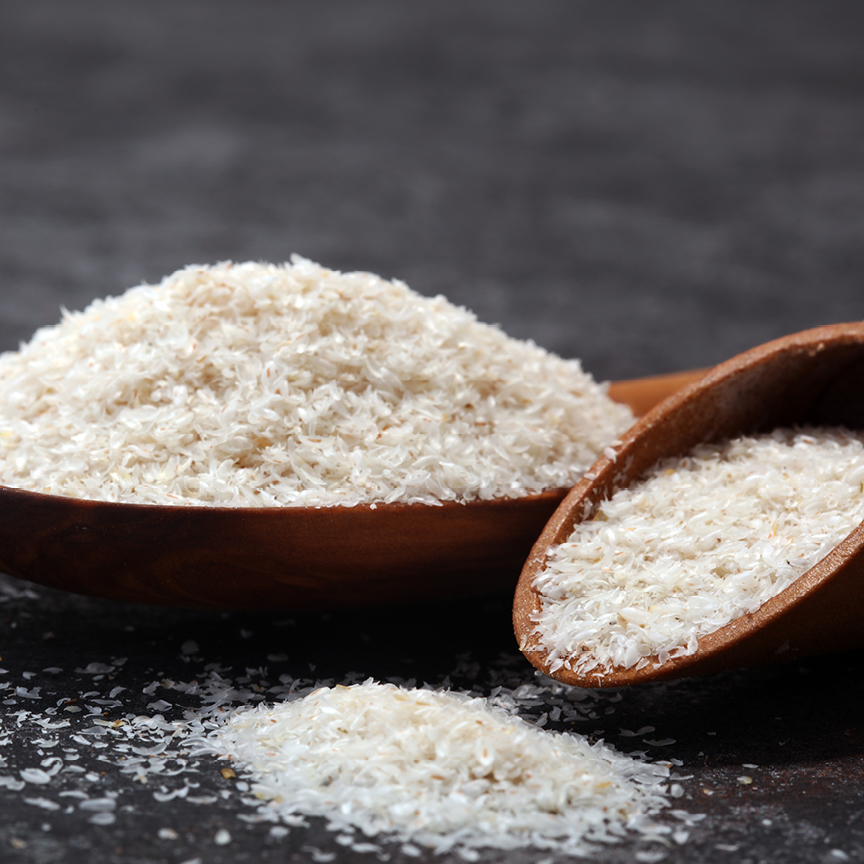
Psyllium Husk
Read More +
Psyllium husk is commonly added to high fiber meals to achieve high fiber intake. Psyllium husk can promote bowel movement and lower the risk of intestinal issues. The high fiber content of psyllium husk also aids in weight control by expanding in the stomach which helps provide a feeling of fullness. It also slows digestion to feel full longer.*
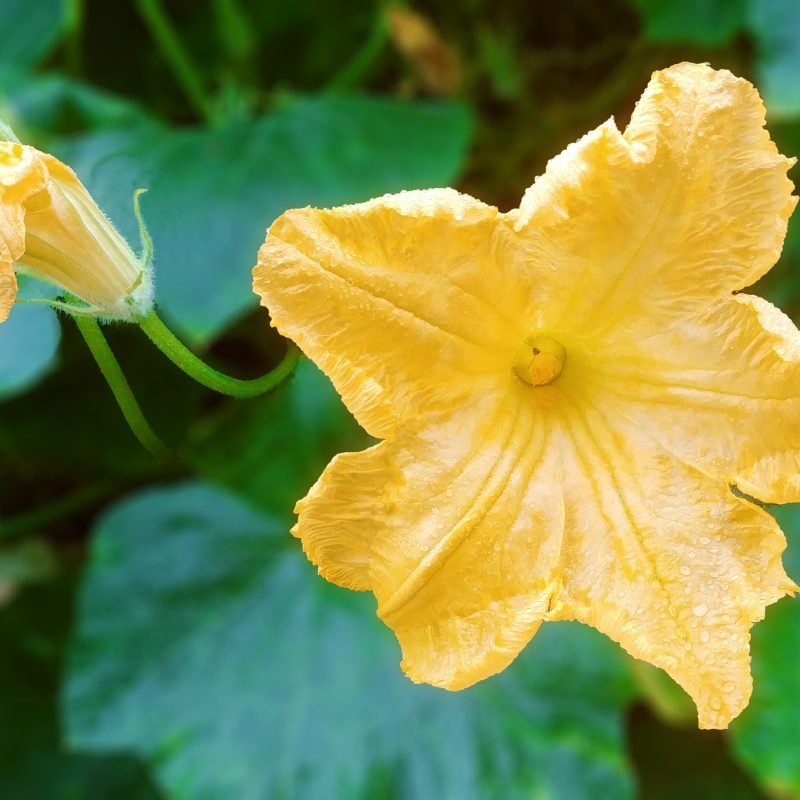
Pumpkin Flower
Read More +
Pumpkins are members of the cucurbit family which includes squash, cantaloupe, watermelon and cucumbers. The dainty yellow flowers are edible and are used to make some of the most popular dishes in India and are used in a variety of cuisines around the world.

Radish
Read More +
The radish is an edible root vegetable originally cultivated in Asia. Radishes are grown and consumed throughout the world, being mostly eaten raw as a crunchy salad vegetable with a slightly spicy flavor, varying in intensity depending on its growing environment. Radishes are a fast-growing, annual, cool-season crop and can be useful as companion plants for many other crops, probably because their odor deters such insect pests as aphids, cucumber beetles, tomato hornworms, squash bugs, and ants. Radishes are rich in antioxidants and minerals like calcium and potassium.*

Raspberry
Read More +
Raspberry is a delicious red fruit with a refreshing burst of flavor. Raspberry is traditionally known to help support hormonal balance.*

Red Bell Pepper
Read More +
Raw red bell pepper is 94% water and is a rich source of vitamin C with moderate contents of riboflavin, folate, and vitamin E. A red bell pepper supplies twice the vitamin C and eight times the vitamin A content of a green bell pepper. Red bell peppers are botanical fruits but culinary vegetables. Pieces of bell pepper are commonly used in garden salads and as toppings on pizza. There are many varieties of stuffed peppers prepared using hollowed or halved bell peppers.*

Red Cabbage
Read More +
The red cabbage is a kind of cabbage with dark red or purple leaves. The plant changes its color according to the pH value of the soil. In acidic soils, the leaves grow more reddish; in neutral soils, they will grow more purple. The juice of red cabbage can be used as a homemade pH indicator, turning red in acid and green/yellow in basic solutions. When cooking, red cabbage will normally turn blue; adding vinegar or acidic fruit to the pot is necessary to retain the cabbage’s red color. Cooked red cabbage is 91% water and has a high content of vitamin C and vitamin K.*

Reishi Mushroom
Read More +
Ganoderma or Reishi – The Chinese thought so highly of this interesting fungus that many still believe it contains a healing spirit. The high esteem of the ganoderma mushroom, in fact, approaches that of ginseng in Chinese culture. Research shows that reishi mushroom may help support the lungs and respiratory system.*

Rice
Read More +
Rice is the seed of the grass species Oryza sativa (Asian rice). As a cereal grain, domesticated rice is the most widely consumed staple food for over half of the world’s human population, particularly in Asia and Africa. Rice is cooked by boiling or steaming, and absorbs water during cooking. Rinsing rice before cooking removes much of the starch, thereby reducing the extent to which individual grains will stick together. This yields a fluffier rice, whereas not rinsing yields a stickier and creamier result. Cooked short-grain white rice provides 540 kilojoules of food energy and contains moderate amounts of B vitamins, iron, and manganese.*

Rose
Read More +
Roses have been celebrated throughout the ages for their elegant beauty and lovely scent. But these graceful flowers with delicate petals are not only beautiful, but they also have a long history of use to enhance beauty. Roses promote collagen production and may help slow the signs of aging and increase blood circulation.*

Royal Jelly
Read More +
Scientist have found that royal jelly is an ideal natural source for hormonal and adrenal support. It is a substance secreted by worker bees for the development of queen bees. Queen bees can live up to 8 years which is 50 times longer than the lifespan of worker bees.*
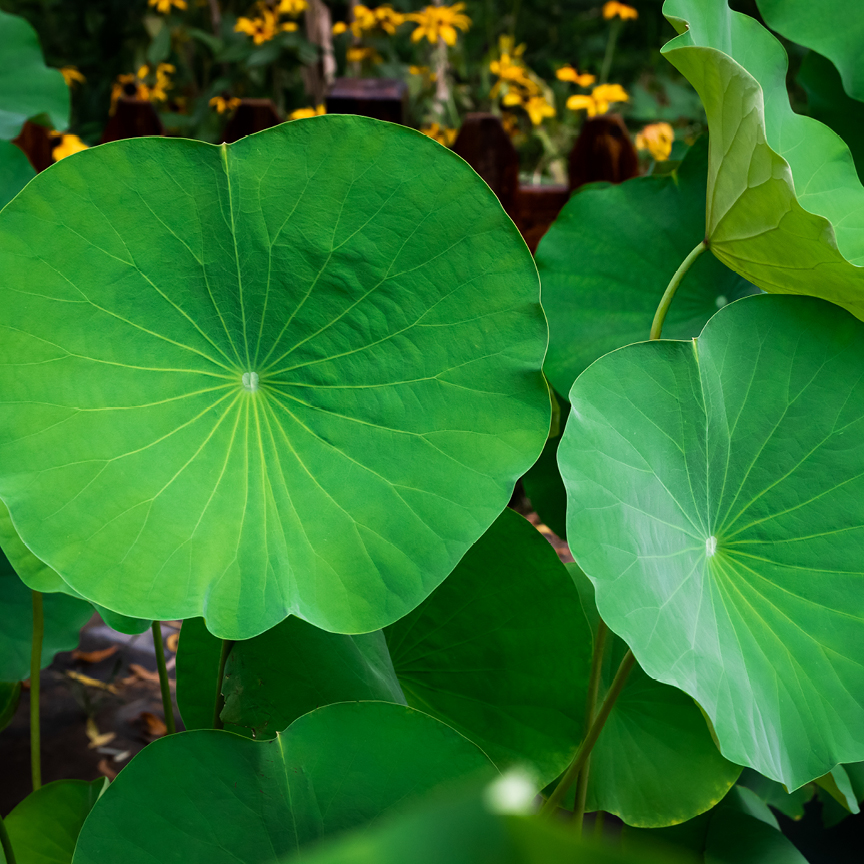
Sacred Lotus Leaf
Read More +
The sacred lotus seed has long been regarded as sacred throughout the Orient as a plant with the power to preserve youth and promote longevity. This traditional Chinese herb is believed to promote health and circulation. Although it is known for its beauty, recent research has found it supports healthy aging by promoting the reduction of oxidative stress.
Scientist have found that royal jelly is an ideal natural source for hormonal and adrenal support. It is a substance secreted by worker bees for the development of queen bees. Queen bees can live up to 8 years which is 50 times longer than the lifespan of worker bees.*
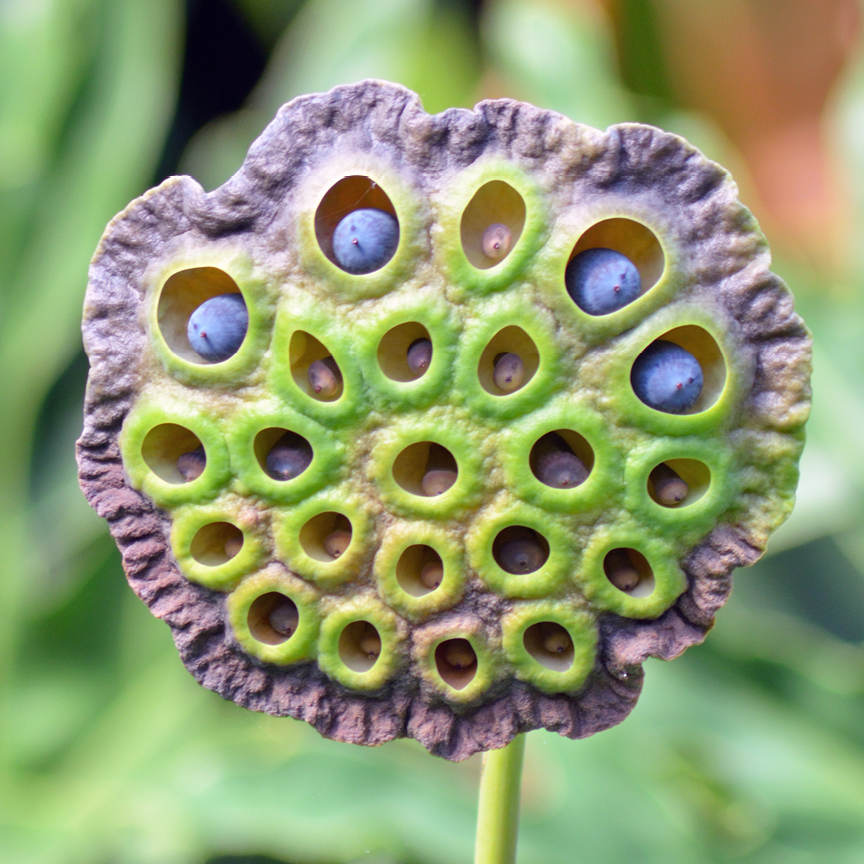
Sacred Lotus Seed
Read More +
The sacred lotus seed has long been regarded as sacred throughout the Orient as a plant with the power to preserve youth and promote longevity. This traditional Chinese herb is believed to promote health and circulation. Although it is known for its beauty, recent research has found it supports healthy aging by promoting the reduction of oxidative stress.
Scientist have found that royal jelly is an ideal natural source for hormonal and adrenal support. It is a substance secreted by worker bees for the development of queen bees. Queen bees can live up to 8 years which is 50 times longer than the lifespan of worker bees.*

Safflower
Read More +
Safflower is a wildflower which grows in open fields in many countries. It is named for its unique brightly colored yellow, orange and red colored blossoms. Safflower has been used as a Traditional Chinese herb for thousands of years to ease stiffness and bring comfort to joints.*

Sage
Read More +
Sage is a small shrub with grayish leaves, blue or purple flowers and has a distinctive smell. It has been grown for centuries, and used as a spice and for its health properties. Sage provides nourishment and helps to maintain overall body balance. It also provides support during menopause, supports the immune system and overall well-being.*

Sargassum Seaweed
Products +
Oxyginberry Capsules, Elemente Skin Care, Elemente Hair Care, Body Care, Oral Care, (Excluding Intensive Moisturizing Oil)
Read More +
Sargassum seaweed combines the ocean’s nutrients into a perfect balance for the human body, providing a source of trace elements and minerals. It is known to support collagen formation and may aid in skin repair and tissue regeneration.*

Shiitake Mushroom
Read More +
Referred to as the “fragrant mushroom,” Shiitake (Lentinus edodes) mushroom has played an important role in traditional Japanese and Chinese cuisines. However, they are not solely culinary in nature. Shiitake mushroom is also used as an Oriental folk remedy to support health and wellness. In 2010, Shiitake mushroom ranked second in the global mushroom market based on consumer demand.*
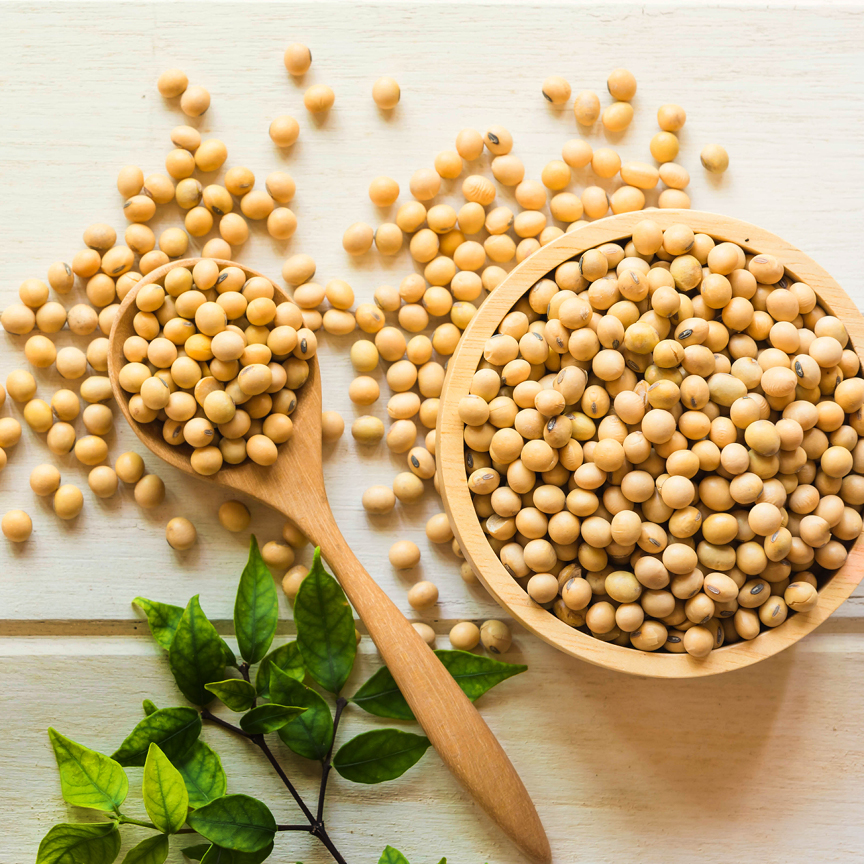
Non-GMO Soy
Read More +
The soy seed is a species of legume native to East Asia, widely grown for its edible bean, which has numerous uses. Traditional unfermented food uses of soybeans include soy milk, from which tofu and tofu skin are made. Soybeans are a rich source of essential nutrients, especially for protein, dietary fiber, iron, manganese, phosphorus, and several B vitamins, including folate.*

Spinach
Read More +
Spinach or Spinacia oleracea is a leafy green vegetable revered for his nutritional value. Commonly referred to as a superfood, spinach is known to fight free radicals. Spinach may help prevent oxidative stress, support eye health, bone density and the immune system.*

Stevia Leaf
Read More +
Stevia leaf is a natural sweetener and sugar substitute native to Paraguay and Brazil. The human body does not metabolize the glycosides in stevia, so it contains zero calories as a non-nutritive sweetener. Stevia is used in sugar and calorie-reduced food and beverage products as an alternative for variants with sugar. The use of stevia as a sweetener began in Japan in the 1970s. Tasty ways to use stevia include in coffee or tea, in homemade lemonade, sprinkled on hot or cold cereal, in a smoothie, or sprinkled on unsweetened yogurt.*

Strawberry
Read More +
The strawberry is cultivated worldwide for its fruit. The fruit is widely appreciated for its characteristic aroma, bright red color, juicy texture, and sweetness. It is consumed in large quantities, either fresh or in such prepared foods as jam, juice, pies, ice cream, milkshakes, and chocolates. The first garden strawberry was grown in Brittany, France, during the late 18th century. Raw strawberries are 91% water and are a rich source of vitamin C, as well as a good source of manganese.*

Swiss Chard
Read More +
Swiss chard is a green leafy vegetable with large leaf stalks prepared separately from the leaf blade. Swiss chard has highly nutritious leaves and has been used in cooking for centuries. Fresh chard can be used raw in salads, stir fried, or in soups or omelets. The raw leaves can be used like a tortilla wrap. Chard leaves and stalks are typically boiled or sautéed. Raw swiss chard is rich in vitamins A, K, and C. It also has a significant amount of dietary fiber, vitamin K, magnesium, manganese, iron, and potassium.*

Tangerine
Read More +
Tangerine is a member of the citrus family. It is sweet and sour with juicy and tender flesh. The essential oil from the fruit’s skin is often used in aromatherapy and homeopathy. Tangerine peel has a lengthy history of use by Traditional Chinese Herbalists to help relieve indigestion, gas and digestive weakness. The white streaks found on the surface of tangerine skin are known to contain bioflavonoids, which may help support healthy circulation.*

Tomato
Read More +
The tomato is the edible berry of the tomato plant, which originated in South America, Mexico, and Central America. The Aztecs used tomatoes in their cooking at the time of the Spanish conquest of the Aztec Empire, and after the Spanish encountered the tomato for the first time after their contact with the Aztecs, they brought the plant to Europe. Tomatoes are consumed in diverse ways: raw or cooked, and in many dishes, sauces, salads, and drinks. While tomatoes are fruits—botanically classified as berries—they are commonly used culinarily as a vegetable ingredient or side dish. A raw tomato is 95% water and is a moderate source of vitamin C.*
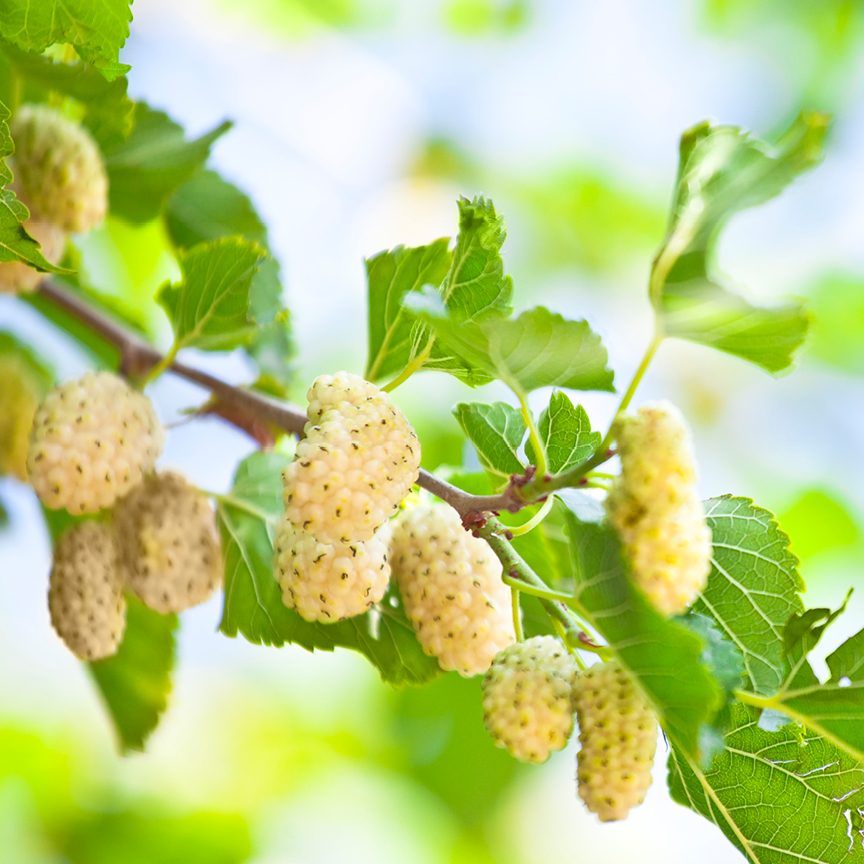
White Mulberry
Read More +
White Mulberry (Morus alba) is a tree whose root, leaves, bark, and fruit are used in herbal traditions around the world. The white mulberry species is native to China but is widely cultivated in many countries. When picked at the peak of ripeness, white mulberries are especially flavorful with a pleasant nectary, honey-like taste. Their color ranges from white to light purple. The ripe berries have a short shelf life of only three to five days, so your chances of seeing them fresh in your local grocery store is not likely. This unique fruit is known to contain anthocyanins, chlorogenic acid, rutin and myricetin to support the cardiovascular system, blood sugar control, and general health.*

Winter Melon
Read More +
Winter Melon (Benincasa hispida) is native to Southern Asia. The fruit grows on a vine, and as it ripens the fuzzy peel becomes powdery, ashcolored and waxy, giving it two of its common names, wax gourd and ash gourd. It has a mild taste similar to cucumber. Popular in Chinese and Indian dishes, the fruit’s various uses have been celebrated for centuries in both Ayurvedic and Chinese Herbal Traditions to help promote detoxification, help aid digestion, reduce inflammation, support blood sugar levels, support healthy cognitive functions, as well as support neurological health and even known as an aphrodisiac.*

Yellow Bell Pepper
Read More +
Yellow bell peppers are a powerhouse of vitamins C and B6. They are also a great source of nutrients, including folic acid, Biotin, and potassium. Yellow bell peppers are botanical fruits but culinary vegetables. Pieces of bell pepper are commonly used in garden salads and as toppings on pizza. There are many varieties of stuffed peppers prepared using hollowed or halved bell peppers.*

Yun Zhi Mushroom
Read More +
Originally used as a traditional Chinese herb, Yun zhi (Coriolus versicolor) mushroom, has been widely used to support the immune system for decades. As early as 1965, reports documented this mushroom’s effectiveness in promoting immune system function. In 2020 alone, there were over 18 peer reviewed reports listed on the USA Department of Health and Human Services website documenting studies of Coriolus versicolor.*


